Committee Blog: Banking Guide for Cannabis Industry Veterans

Published by NCIA’s Banking & Financial Services Committee (BFSC)
As a veteran of the cannabis industry, you’re already familiar with the regulatory complexities and operational risks that come with running a legal cannabis business. But even as the industry matures and expands—projected to reach $52 billion by 2026—banking remains one of the most persistent and misunderstood challenges.
Despite being legal in many states, cannabis remains a federally prohibited substance. That means financial institutions must follow federal laws, including the Bank Secrecy Act (BSA), Anti-Money Laundering (AML) protocols, and FinCEN guidance, if they choose to work with cannabis-related businesses. This legal conflict results in higher compliance costs, greater documentation requirements, and fewer financial services available to cannabis operators.
Still, legitimate banking options are becoming more accessible. Businesses that operate transparently and work with proper compliance systems can secure reliable financial partnerships—without resorting to risky workarounds that often lead to frozen funds or account closures.
Understanding the Rules of the Game
Cannabis business owners must understand that banks operate under an entirely different set of rules. Even if your business is licensed and fully compliant at the state level, banks must verify that you also meet federal standards. This includes full documentation of your business structure, licensing, tax status, and ownership—especially for individuals holding 25% or more equity in the company.
Financial institutions also require evidence that you follow local rules, such as zoning approvals and municipal permits. The banking industry takes particular interest in ownership transparency, as previous cannabis operators have attempted to hide beneficial ownership behind shell companies or layered corporate structures. While these tactics may have delayed scrutiny in the past, they are now seen as high-risk and typically result in terminated accounts.
Laying the Groundwork: Due Diligence and Documentation
Before engaging with a financial institution, be prepared to undergo a deep due diligence process. Banks will expect to review your business formation documents, operating agreements, state and local cannabis licenses, tax filings, SOPs for compliance and security, and detailed financial statements. They may also request proof of your inventory tracking system, insurance coverage, and even video footage or plans related to your cash-handling procedures.
The more organized and transparent your records are, the more confident a bank will feel in your business. This includes having an accurate and up-to-date organizational chart, verifying all ownership interests, and providing supporting evidence for your business’s revenue, investments, and cash flow.
Proving Your Controls: AML and Seed-to-Sale Integration
Because cannabis remains a cash-intensive industry, banks are especially concerned about your ability to prevent money laundering. You’ll need to demonstrate that you have systems in place to document and trace every major transaction, identify suspicious activities internally, and track the movement of cash throughout your business. Written policies, transaction logs, and surveillance data are all important tools in meeting these requirements.
An essential part of building banking credibility is aligning your financial statements with your seed-to-sale inventory tracking system. If a bank asks how your product movement matches your reported income, you should be able to demonstrate a direct connection. Inconsistencies raise red flags, while tight integration builds trust.
Financial Discipline and Tax Transparency
Using cannabis-specific accounting software and experienced CPAs is no longer optional—it’s expected. Your records should be clear, professional, and separated from any non-cannabis revenue streams you might have. Maintaining excellent tax compliance is also crucial, particularly around IRS Section 280E, which restricts the deductions cannabis businesses can claim. Banks want to see not only that you’re filing taxes properly, but that you understand and proactively manage your tax obligations.
Relationship Management: Treat Your Bank Like a Partner
Just as you would with a supplier or regulator, maintaining a proactive relationship with your financial institution is key. Assign specific team members to handle banking communications. Keep your bank informed about changes in your business—whether that’s a new owner, a license renewal, or a change in address. Fast, accurate responses to information requests demonstrate your professionalism and commitment to compliance.
By contrast, businesses that open multiple accounts under vague business names, change banks frequently, or misrepresent their activities inevitably find themselves blacklisted. Several operators have lost access to funds or even shut down entirely due to deceptive practices.
Modern Solutions for a Modern Industry
Fortunately, the cannabis banking landscape has evolved. Today, more credit unions and state-chartered banks are stepping forward with programs designed specifically for cannabis operators. These institutions typically charge higher fees to cover the added compliance workload, but they offer transparency and predictability in return.
Additionally, cannabis banking platforms now exist to connect businesses with financial institutions that understand the industry. Some of these platforms also include tools for compliance documentation and reporting. New payment technologies are also emerging that reduce the need for cash handling while still staying within banking regulations.
All of these options represent a shift away from outdated and dangerous practices— such as disguising cannabis income, running funds through unrelated businesses, or relying on holding companies to open accounts.
Yes, It’s More Expensive—But It’s Worth It
Cannabis businesses must accept that they will pay more for banking services. Monthly fees often range from a few hundred to several thousand dollars. These charges cover the cost of suspicious activity report (SAR) filings, KYC verification, and ongoing account monitoring required by federal law.
While expensive, these fees are far less costly than dealing with frozen assets, last minute bank changes, or operating entirely in cash. The predictability and legitimacy that come with compliant banking relationships more than justify the investment.
Understanding SARs and Staying Ahead
Every cannabis-related account triggers SAR filings. Banks file one of three types: a Marijuana Limited SAR for compliant businesses, a Marijuana Priority SAR if the institution suspects a violation of state law, and a Marijuana Termination SAR if the account is shut down for compliance reasons. Trying to avoid SAR filings by obscuring your business type is a red flag and virtually guarantees eventual termination. It’s better to work with institutions that understand these requirements and have built programs to manage them.
Partnering with the Right Providers
You don’t have to navigate all of this alone. Specialized platforms can help manage your documentation and connect you with cannabis-friendly banks. When choosing a provider, confirm they understand both banking and cannabis regulations, check their track record, and make sure they offer strong data protection protocols.
The Payoff: Long-Term Stability and Growth
The benefits of strong compliance go beyond simply keeping your account open. Banks often lower fees over time for trusted partners, and access to services like lending and merchant processing expands as your relationship matures. Businesses with stable banking relationships are better positioned to grow, raise capital, and scale without constant operational disruptions.
Final Thoughts
As a cannabis industry veteran, you already understand regulation. But banking requires a deeper level of documentation, consistency, and strategic communication. Avoid shortcuts. Invest in compliance. Be transparent with your financial partners. While the process may be more rigorous than what other industries face, it’s navigable—and increasingly essential for sustainable growth.
In today’s environment, legitimate banking relationships aren’t just possible—they’re a competitive advantage.
Committee Blog: Mitigating Risk in Your Cannabis Workforce

We in the cannabis industry are all too familiar with working in an industry with high levels of risk. These risk factors can come in a variety of different forms—from federal intervention to banking to security. However, an aspect of risk that’s often overlooked in the cannabis industry is related to one of the most vital aspects of a functional and compliant cannabis operation—the employees.
Here we will look at risk and risk mitigation techniques involved with identifying the right individuals for hiring in this regularly changing industry, employee training, and the best onboarding/ offboarding practices.
Hiring the Right Folks
I’ve worked with clients across over a dozen different cannabis markets and one of the most recurring pieces of insight I get from newer business operators is a desire to work small. The fewer people the better. In many instances I’ve had clients who wish to not hire or pay anyone full-time at their cannabis operation except for themselves.
While this can obviously decrease overhead costs by having a small personnel pool, it’s virtually inconceivable to have a regulated and compliant cannabis operation—be it a cultivator, manufacturer, retailer, or even a microbusiness—without well-trained and well-qualified individuals within the business. No one can do this work on their own, so you will need to hire the right folks for the job.
From a risk mitigation standpoint, having the right processes in place is essential. This involves finding people with industry experience or at least relevant experience to their job duties, running thorough background checks for new hires, and assessing the specific needs of your own business operation from a personnel standpoint. What does this last point mean? Every cannabis operation is unique, and requires different demands of employees. For example, a manufacturer may want to make sure they have individuals comfortable with industrial machinery associated with extraction or have knowledge in packaging and labeling and the state-specific requirements for such. Human error can increase the overall risks of an operation, so it’s critical to find good people for the business.
The Importance of Training
No matter how knowledgeable and experienced an individual may be, they will still need to be trained in a myriad of standard operating procedures, employee handbooks, and other processes. This is critical not just for a cannabis operation in general, but also for the business specific needs for each business’s unique structure.
Training is important not just from an onboarding perspective (more on that later!) but also for recurring purposes such as when regulations and laws change. We have all seen how states decide to update or modify rules and regulations, so it’s important to stay compliant with even the smallest changes that can impact a business. Being out of compliance with even minor updates can result in steep fines or even revocation of a cannabis license.
As a tool for employees, training throughout their time at a business allows them to become more comfortable with operational readiness, improves one’s overall effectiveness with problem solving, and offers employees better resources to report any wrongdoing they may encounter. Well-trained and knowledge employees make for a better managed business and a business that’s taken proactive steps to reduce risks within their workplace environment.
The Most Critical Employee Related Steps
While air travel is safe, the most dangerous times are during takeoff and during landing. In many ways, this is applicable to employees and working in cannabis. When onboarding a new employee, it’s crucial to mitigate risks appropriately. This means, as mentioned previously, making sure the employee in question passes a robust background check. This is more often than not required by states too, but the strictness and the disqualifying factors an individual may vary.
Additionally, when an employee leaves a cannabis business, appropriate offboarding procedures are essential. Diversion is one of the biggest threats which a cannabis operator will face. Luckily, there are steps to mitigate this and the easiest one often relates to employee training and offboarding. Should an employee be identified as having engaged in diversion, offboarding steps—which may include changing SOPs, having a detailed exit interview with said employee, updating keycards or access points for cannabis and cannabis products, and/or increasing physical security personnel on or around a premises—are valuable to have in place.
Offboarding is critical to compliant operations and operations which have taken appropriate steps to reduce risk. Documentation and fair, timely communication through a potentially emotionally charged process can assist with covering one’s legal and financial bases and ensure for a smoother transition between employees working in the same or similar capacities.
Risk with Employees
On the whole, yes there are risks associated with anything and everything human related. This is true beyond just the cannabis space but is particularly unique here given the overall higher level of risks associated with working in this industry. However, every risk can be assessed and mitigated accordingly and this is also true with the people involved. Hire right, train well, and handle crises well and the risks overall can be more adequately addressed.
Make Your Voice Heard: Why You Can’t Afford to Miss NCIA’s Annual Lobby Days & National Stakeholder Summit

It’s no secret that the cannabis industry is in dire need of reform. Businesses are struggling, consolidation is rampant, and communities continue to bear the costs of prohibition. At the same time, partisan gridlock has made progress at the federal level more challenging than ever. The cannabis industry—its business owners, employees, and advocates—feels the weight of uncertainty, cynicism, and frustration.
But one thing is certain: change doesn’t happen without action. That’s why there’s no better investment in the future of your business and the industry than attending NCIA’s 13th Annual Cannabis Industry Lobby Days and the inaugural National Stakeholder Summit in Washington, D.C., from May 13-15, 2025.
A New Era of Advocacy Begins with the National Stakeholder Summit
For the first time, we’re launching the National Stakeholder Summit, a deep dive into the policy challenges and regulatory shifts shaping the cannabis industry. This is where business meets policy, and where industry leaders set the stage for the advocacy that follows.
NCIA members enjoy complimentary access to the Summit, while non-members can attend for just $100. If you’re not yet a member, there’s never been a better time to join NCIA and unlock full access to this high-impact event.
Lobby Days: The Most Important Advocacy Event of the Year
After the Summit, NCIA’s 13th Annual Cannabis Industry Lobby Days provide a unique opportunity for cannabis professionals, business owners, and advocates to directly influence federal policy. As the industry continues to expand, engaging with lawmakers is essential to advancing sensible regulations, protecting businesses, and pushing for federal reform.
At Lobby Days, attendees will educate members of Congress and their staff on key industry priorities, including:
✅ Banking access
✅ 280E tax reform
✅ Federal legalization
✅ Criminal justice reform
✅ Sensible regulations for hemp products
Even more importantly, this is your chance to share your personal story. Lawmakers need to hear directly from industry professionals about the real-world impact of federal policies. Personal engagement can significantly influence legislative decisions and demonstrate the economic power and legitimacy of the cannabis industry.
Why Showing Up Matters
Beyond advocacy, Lobby Days offers unmatched networking opportunities, allowing you to connect with other business leaders, policymakers, and industry stakeholders. These relationships are critical for staying informed, forming strategic partnerships, and ensuring long-term success in the cannabis space.
This isn’t just about being seen—it’s about being heard. And the best way to ensure your voice carries weight is by standing with the largest and most influential cannabis trade association in the country.
Reserve Your Seat at the Table
NCIA’s Lobby Days is an exclusive, members-only event. Not yet a member? Join today to secure your spot and be part of the movement shaping the future of cannabis.
Already a member? Register now to stay up to date on our agenda, training sessions, and more.
Want to Maximize Your Impact?
Consider sponsoring Lobby Days to amplify your company’s voice and position yourself as a leader in cannabis advocacy. Sponsorship opportunities help you stand out before, during, and after the event.
Be in the room. Be part of the movement. Join us in Washington, D.C.
I look forward to seeing you there—just don’t forget to pack comfortable shoes!
Michelle Rutter Friberg
Director of Government Relations, NCIA
Member Blog: How Cannabis Insurance Can Safeguard Your Business from Legal Risks
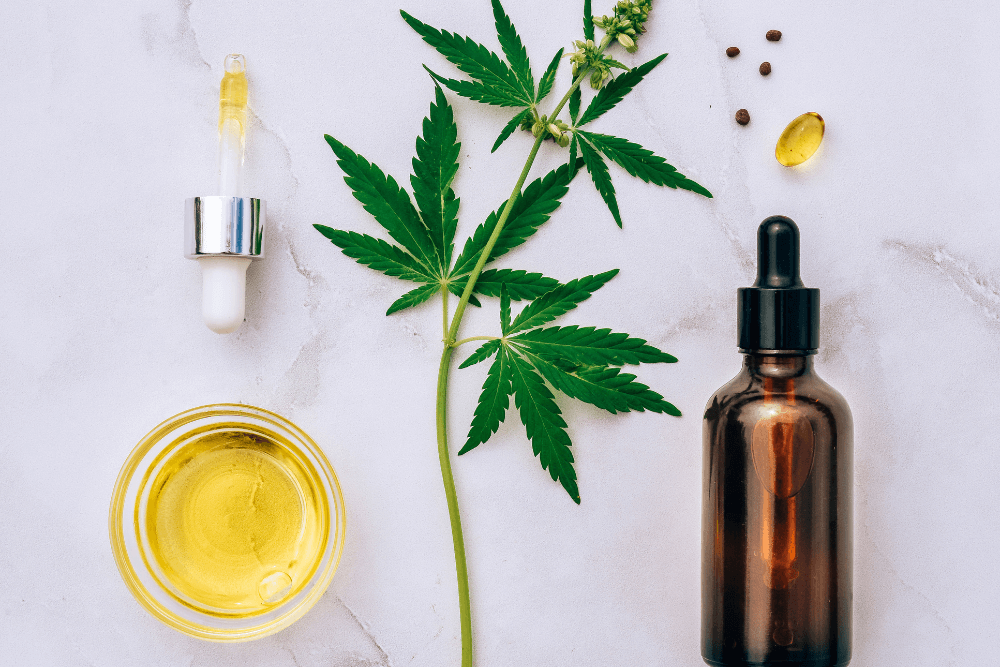
The cannabis industry is growing rapidly, yet with this expansion comes a complex array of legal risks. From compliance with regulations to managing liability claims, cannabis businesses face unique challenges that require specialized insurance solutions. Cannabis insurance provides essential protection, enabling businesses to operate legally and securely while minimizing potential financial hazards.
This article explores how cannabis insurance can safeguard your business from legal risks, outlining vital coverage options and the importance of risk management in this evolving industry.
Understanding Legal Risks in the Cannabis Industry
Businesses in the cannabis industry need to grasp the legal difficulties that affect them. The cannabis business operates under strict regulatory parameters which make businesses exposed to major market challenges stemming from compliance problems and legal complications. Several of the most frequent legal risks encompass:
Breaches of Regulatory Compliance
All cannabis companies must follow every law enacted by the federal government and state authorities, together with regional ordinances. Business operations face severe consequences when any compliance violation occurs, regardless of intention since it leads to potential business shutdowns or heavy fines together with legal action. Insurance coverage helps pay for the legal expenses that arise from compliance cases.
Lawsuits for Product Liability
Users may encounter safety risks when using cannabis products that include edibles and tinctures, and vaporizers. Experiencing negative reactions from customers who believe their product is faulty could trigger expensive legal proceedings for a business. The insurance protects companies in case clients bring product liability claims.
Claims Related to Employment
Possible legal challenges arising from workplace discrimination combined with unfair dismissal and harassment issues affect all industries including cannabis. EPLI provides coverage to pay for legal costs and compensation required in employment claims.
Property and Theft Hazards
The expensive marijuana stock maintained by cannabis companies makes them especially vulnerable to theft incidents. Business disruption can occur because of fire incidents combined with vandalism or natural disasters damaging property. The coverage provided by property insurance enables businesses to recuperate after experiencing such events.
Cybersecurity Risks
Cannabis companies currently use online systems to store sensitive corporate and client information. Businesses which obtain cyber liability insurance gain safeguarding against financial consequences and data breach losses together with hacking incidents.
Key Insurance Policies to Protect from Cannabis Operations
Businesses operating in the cannabis industry must buy specialized insurance plans that protect them against relevant dangers. Several mandatory insurance protection plans exist, which include:
1. General Liability Insurance
General liability insurance helps businesses avoid legal expenses after claims from external entities when these entities suffer property damage or experience customer injuries. Every cannabis business needs this policy for essential protection purposes.
2. Product Liability Insurance
Product liability insurance protects businesses from legal consequences that stem from releasing dangerous defective products onto the market. Additions to legal costs and settlement payments, together with damages awarded during legal cases, fall under the scope of this insurance.
3. Workers’ Compensation Insurance
Through the workplace policy employees can receive medical care together with income benefits when their job injuries occur. The manual nature of cannabis businesses necessitates workers’ compensation insurance due to the high risks of workplace injuries.
4. Property Insurance
The protection given by property insurance provides monetary compensation for physical structures including dispensaries along with warehouses and cultivation buildings. This policy protects organizations by paying for costs arising from fire damage as well as theft events and natural disasters.
5. Employment Practices Liability Insurance (EPLI)
Employment Practices Liability Insurance which you may also know as EPLI, protects cannabis businesses from employment-related lawsuits that might occur when employees face discriminatory action and harassment at work and unfair termination.
Benefits of Cannabis Insurance for Legal Protection
Investing in cannabis insurance provides numerous benefits in addition to financial protection. Here are several important advantages:
1. Ensures Compliance with State Laws
Numerous states mandate that cannabis companies possess certain types of insurance to fulfill their licensing obligations. Possessing appropriate coverage guarantees adherence and avoids licensing problems.
2. Minimizes Financial Losses
A business unprepared with insurance faces financial challenges when trying to afford costs of court procedures and payment of settlements. Insurance alleviates the monetary stress of legal actions and claims.
3. Enhances Business Credibility
Being insured at proper levels represents both professional conduct and responsible management of accountability. A cannabis business protected by proper risk management attracts more customers and investors together with business partners who demonstrate trust in its operations.
4. Protects Business Owners and Employees
Insurance provides legal advocacy along with monetary support when defending against lawsuits to shield both organizations and their personnel against unpredicted legal responsibilities.
5. Reduces Business Interruptions
Unexpected incidents, such as theft or property damage, can disrupt operations. Insurance helps businesses recover quickly by covering losses and repair costs, minimizing downtime.
Choosing the Right Cannabis Insurance Provider
Choosing the appropriate insurance company is essential for thorough coverage. Here are several important factors to keep in mind:
1. Industry Experience
Select an insurance provider that specializes in cannabis policies and comprehends risks particular to the industry.
2. Policy Customization
Seek out providers that deliver customized coverage choices suited to your business requirements, regardless of whether you run a dispensary, cultivation site, or distribution firm.
3. Reputation and Financial Stability
Investigate the insurer’s financial stability, customer feedback, and claim handling effectiveness to guarantee dependability.
4. Compliance Knowledge
Due to variations in cannabis laws among states, collaborate with an insurance provider that remains informed about changing regulations to guarantee compliance.
Conclusion
Risk management for the cannabis industry requires proactive strategies since insurance serves as an essential component among such approaches. Companies that invest in wide-reaching cannabis insurance coverage protect themselves from regulatory fines and legal actions as well as property damage and multiple types of liabilities.
Businesses that adopt proper insurance coverage mechanisms get protected from financial instability and also gain regulatory compliance while enhancing their credibility and building enduring business success. The cannabis sector’s development requires businesses to obtain suitable coverage that minimizes their risks and enables secure business operations.
Member Blog: CBD Oracle Launches Consumer Protection Standards to Address Industry-Wide Issues in Hemp Products

CBD Oracle has released a set of objective, expert-backed criteria to help consumers find better hemp products and lay out clear expectations for companies.
The hemp industry has been a lifeline for many farmers, but it’s a minefield for consumers. Everyone tells you to check lab reports, but much of the time they don’t include safety testing, and sometimes they’re even outright fake. Brands talk a big game about not selling to youth but then don’t check IDs on purchase or delivery. And even if you do find a brand that doesn’t do this stuff, their labels are probably still misleading and there may be unintended and unknown ingredients that even the lab doesn’t mention.
There is a lot of talk about self-regulation, but with very little top-down control, bad actors are still widespread and the challenge of finding safe, reliable, and effective products falls primarily on consumers. At the same time, honest brands are faced with competing pressures, hoping to put out products that tick all the right boxes but balance this out against profitability.
CBD Oracle set out to address these issues, interviewing 22 experts and two governmental agencies about what they’d look for in a hemp product if they were recommending one to friends, family, or patients. The result is a set of objective criteria for evaluating cannabinoid products, covering everything from the plant on the farm right through to the labeling and marketing of the finished product.
For consumers, it’s a guide for what to look out for, but for brands, it’s a blueprint for making the highest-quality cannabinoid products you can and standing out from the bad actors.
You can read the full report here: A Comprehensive Framework for Evaluating Cannabinoid Products (PDF)
The Problems With the Hemp Industry and How They Affect Consumer Trust
While the 2018 Farm Bill left the regulation of hemp products to the FDA, the agency has dragged its feet in establishing regulations and left the task to the states. The end result of this is often described as a “patchwork of regulations,” but this misses what is arguably the biggest issue: enforcement varies drastically from state-to-state and this lack of oversight means that customers cannot depend on anything, even if their state theoretically has solid rules in place.
This leaves consumers facing many issues including inaccurate labeling, deceptive marketing, unsafe products (often containing unknown and unreported byproducts), and a general lack of consistency.
For brands, this has serious knock-on effects:
- Reduced consumer trust: Consumers know that many brands don’t hit the mark, so they are more likely to stick to one or two brands they can rely on and shop around less.
- Governmental scrutiny: The lax standards in the hemp industry attract negative media coverage and in turn encourage state governments to crack down on hemp.
- Market uncertainty: The lack of trust from consumers and skepticism from the government brings uncertainty into the industry. The threat of increased regulation or even outright bans hangs over the future.
A Comprehensive Framework for Evaluating Cannabinoid Products: In Brief
CBD Oracle spoke to 22 experts from the industry, research, medicine, and the law, as well as the FDA and the California Department of Public Health, and reviewed existing standards to come up with their Comprehensive Framework for Evaluating Cannabinoid Products.
The entire framework is in CBD Oracle’s PDF report and blog post, but briefly, the experts identified several key factors consumers should look out for and the industry should strive towards.
The plant’s origin and cultivation method
The plant should be grown in the US, ideally using organic farming methods, outside under natural light, from a single strain and single origin, and preferably in states with ideal climates and robust hemp programs.
Extraction
The extract should be made from flower using a clean method that removes contaminants while preserving beneficial compounds, such as CO2, with natural cannabinoids (not converted) and terpenes (or at least 99% purity for isolates).
Third-party lab testing
There should be full-panel tests publicly available for each batch/lot of each finished product, ideally including tests of raw materials, from an accredited lab with a credible reputation, which confirms that the product is free from contaminants and the potency is within 10% of the advertised amount (20% for low-dose products). The lab report should be less than a year old and should have a QR code for easy verification.
Quality control
The company should be a GMP-certified manufacturer, with an FDA-registered facility, that oversees the entire production process (i.e. not a white-label brand) and has a chain of custody documentation. The hemp should ideally be USDA certified organic, and with NSF sport certification if it’s intended to be 100% THC-free.
Ingredients and additives
The product should be made without harmful or unnecessary additives, including (but not limited to) vitamin E acetate, synthetic fragrances, artificial colorings, parabens, or synthetic cannabinoids, shouldn’t include unregulated supplements, and any vape products should preferably use a base of propylene glycol (and/or vegetable glycerin).
Packaging and labeling
The product should comply with all labeling requirements, be packaged in a child-resistant container, with packing and expiration dates shown, clear dosing instructions, a batch/lot number for traceability, complete ingredient listing, a QR code linked to the lab report and appropriate health warnings.
Reputation, transparency, and marketing
The company should not make unapproved medical claims, use marketing intended or likely to appeal to youth, or sell hemp products without substantive age verification. They should be transparent about their team, work with experts, ideally engage in advocacy or be a member of industry organizations, and offer good customer service, including a money-back guarantee.
Conclusion – Working Towards a Better Industry
It’s likely that the upcoming update to the Farm Bill will come into force before we get any substantive regulation of hemp at the federal level, with the update likely restricting intoxicating hemp. The only way to show the industry is responsible before then is to hold it to higher standards, pushing customers to expect more and companies to do more to ensure their products are safe, efficacious, and reliable. While the criteria won’t solve the problems facing the industry, they offer a clear path forward for the industry and empower consumers to expect more of the companies whose products they buy.
You can access the full report in a PDF here: A Comprehensive Framework for Evaluating Cannabinoid Products
Member Blog: What Schedule III Could Bring

The reclassification of cannabis to Schedule III would acknowledge its accepted medical use and lower potential for abuse compared to Schedule I substances. This shift would bring cannabis more in line with other prescription medications, necessitating rigorous standards for quality control and safety. For cannabis testing labs and product manufacturers, this means heightened scrutiny and the need for stringent compliance with federal regulations.
Because medical cannabis under a Schedule III change would be under federal jurisdiction, it would be regulated by the FDA and enforced by the DEA just like any other controlled substance. However, recreational cannabis industries would not comply with federal schedule III status and would, therefore, remain under sole state jurisdiction. In this blog, we anticipate state governments will update their regulations to align with federal Schedule III requirements. This harmonization means testing labs and product manufacturers must be prepared for consistent standards across federal and state levels. “We anticipate a two-pronged access approach for cannabis products,” says Troiani. “Schedule III-regulated sales via pharmacies and state-regulated over-the-counter access via dispensaries.” This dual system will require labs and manufacturers to navigate differing compliance landscapes, ensuring that products meet the necessary standards for both distribution channels.
According to Troiani, with the reclassification of cannabis to Schedule III, there is significant potential for the federal government to assume regulatory oversight of state cannabis testing labs. This transition would bring cannabis testing under the same stringent regulatory framework that governs pharmaceutical products, ensuring uniformity and consistency in testing standards nationwide. Such a move may require labs to meet rigorous standards, including detailed documentation, quality control measures, and regular audits. We are prepared to help labs navigate this potential shift, ensuring seamless compliance with FDA regulations and maintaining the highest quality and safety standards.
Read the full article from Digamma Consulting here.
Member Blog: Retail Dispensary – Vault to Floor Efficiency

Cannabis dispensaries face unique challenges in maintaining security while ensuring a seamless customer experience. Efficiently moving products from the vault to the retail floor is crucial for both operational efficiency and security. According to a report, theft at cannabis dispensaries has surged by over 30% in recent years, underscoring the need for robust security measures. This article will explore the benefits of an efficient vault-to-floor process, the challenges involved, and practical solutions to enhance both security and productivity in dispensaries.
Five Reasons to Prioritize Retail Efficiency
Cannabis dispensaries have evolved significantly since their inception, growing from small, community-focused operations to sophisticated retail environments. However, with this growth has come an increase in internal theft, which can severely impact a dispensary’s profitability and reputation. A well-designed retail layout that minimizes unnecessary movement and maximizes security is critical in mitigating these risks. Efficient vault-to-floor processes not only enhance security but also contribute to a better customer experience by reducing wait times and increasing staff productivity.
- Better Customer Experience: An efficient product transfer system means budtenders spend more time assisting customers and less time retrieving products. This improved interaction can lead to higher customer satisfaction and loyalty.
- Increased Productivity: By reducing the need for staff to leave the floor, dispensaries can serve more customers in less time, thereby increasing overall productivity.
- Loss Prevention: A secure, efficient system for moving products minimizes the risk of internal theft. According to a study, dispensaries with robust security measures report a 20% decrease in product loss.
- Security Enhancement: Minimizing traffic to and from the vault enhances security, as frequent access increases the risk of theft and breaches.
- Vault-to-Floor Efficiency: Implementing a strategic plan for product movement ensures both employee and product safety. Efficient systems like pneumatic tubes or remote conveyors can streamline this process, making it faster and more secure.
Three (Practical) Ways to Improve Retail Efficiency in Your Dispensary
- Pneumatic or Remote Conveyors: These systems can quickly and securely transport products from the vault to the retail floor, minimizing the need for staff to leave the customer area. These are the same systems used in banking and pharmacy drive-thru—two industries that, just like dispensaries, prioritize security and reliability around transaction processes. Dispensaries may deploy a repurposed version of these systems to connect the vault to customer-facing check-out registers. Your store layout will likely be a determining factor in which system or manufacturer can accommodate your needs. In addition, some creative engineering around these solutions can yield a more memorable brand experience for the customer—consider it a bonus perk!
- Access Control Systems: Implementing systems that log and control access to different areas of the dispensary can significantly enhance security. Only authorized personnel should have access to the vault, and their entry and exit should be logged automatically. Implementing an Access system is less of a hassle than dealing with mechanical keys. The loss of a key means changing the locks and reissuing keys, plus keys do not enable audit trail capabilities. The loss of an access control card, fob, or pin is only a few keystrokes, and the risk level is eliminated, removing the privileges/rights, all while still having full traceability of when that key was used.
- Comprehensive Camera Systems: Surveillance cameras should cover all key areas, including the vault, retail floor, and employee-only zones. This not only deters theft but also mitigates internal loss, all while providing valuable evidence in case of incidents. The configuration flexibility can assist with improving a site’s security and overall efficiency: with onsite or remote eyes to areas for live or historical view, smart alerts notification for real time actions to be taken or improve the time for forensic video investigation to name a few.
It’s Never too Soon to Take Appropriate Action
If you think breaches and other issues will wait for you to feel comfortable spending budget to optimize your layout, efficiency and security, think again. By enhancing customer experience, boosting productivity, and preventing loss, dispensaries can ensure a safer and more profitable operation. When it comes to getting product from the vault to the customer, half-measures won’t cut it. It’s the most critical point of your retail operation, and it deserves that level of consideration when allocating budget and resources to optimize processes surrounding it. Implementing solutions such as pneumatic conveyors, access control systems, and comprehensive camera systems are practical steps toward achieving this goal. Dispensary owners and operators should consider these technologies when planning their retail spaces. By doing so, you can create a safer environment for both staff and customers while optimizing your operational workflow.
Member Blog: A Decade of Data Shows Increasing Support for Cannabis Legalization – CBD Oracle Analysis
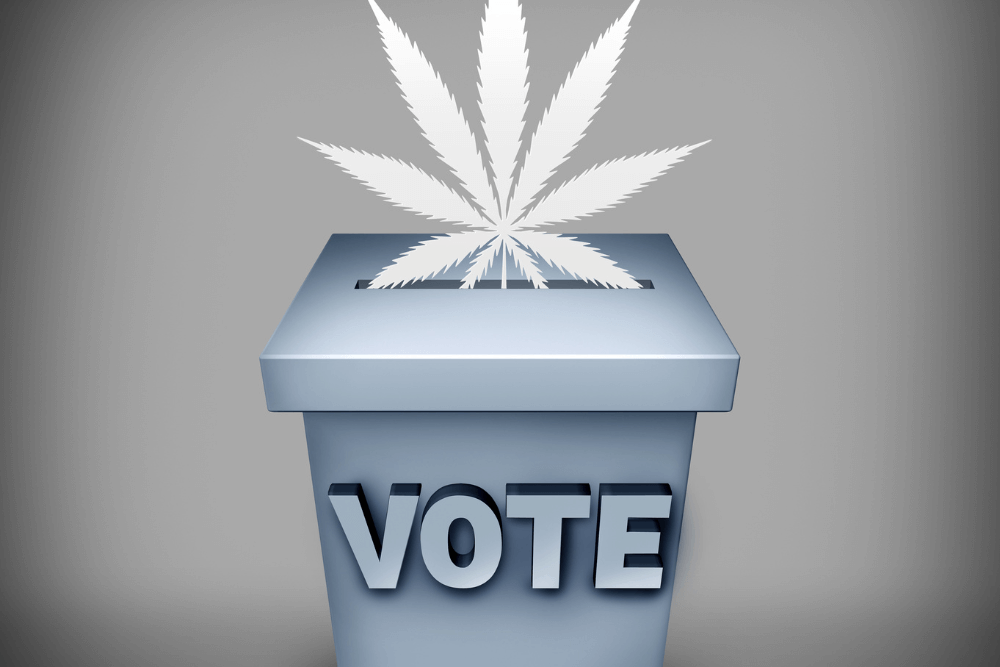
CBD Oracle’s combined analysis of 70 polls shows a decade of increasing support for legal cannabis, with 62% of Americans supporting legalization in 2024.
How many Americans support legalizing cannabis? You might think this is easy to answer: you find the most recent poll and look up the number. The problem is that each individual poll is only a snapshot, based on a randomly-selected group of respondents and influenced by all manner of random factors. It’s like rolling a loaded die: yes, the number with the weight behind it is more likely to turn up, but you can still get an unexpected result on any given roll.
The way you tell a die is loaded is by rolling multiple times and looking at the statistics. Likewise, if you want to see what people really think, you need to look at multiple polls and combine the results statistically.
CBD Oracle has done exactly this with a decade’s worth of poll data on marijuana legalization, and the results show that while the majority of Americans still support legal weed, the number peaked in 2022 and still hasn’t recovered.
Combining Poll Data: CBD Oracle’s Monte Carlo Analysis
CBD Oracle first collected every poll taken from 2015 through to July 2024 that asked a nationally-representative sample of American adults whether they support legalizing cannabis.
As well as national polls, CBD Oracle also looked for polls from Florida and South Dakota, where upcoming ballot initiatives will give voters the option of legalizing cannabis in-state. This resulted in 70 polls for the analysis in total.
The polls were combined using Monte Carlo simulations, which is a common approach to combining political polls. This basically uses the mean and margin of error from each poll to generate multiple simulated “results,” which represent the distribution of results you’d expect if you repeated each poll multiple times. These results were then pooled together, in six-month blocks, to find an overall average for the half-year which accounts for both between-poll and within-poll variability.
You can read more about the methodology in CBD Oracle’s PDF summary of the results.
The Results: 62% Support Legalizing Cannabis in 2024
The decade of national data analyzed by CBD Oracle shows a clear increase in support for cannabis legalization.
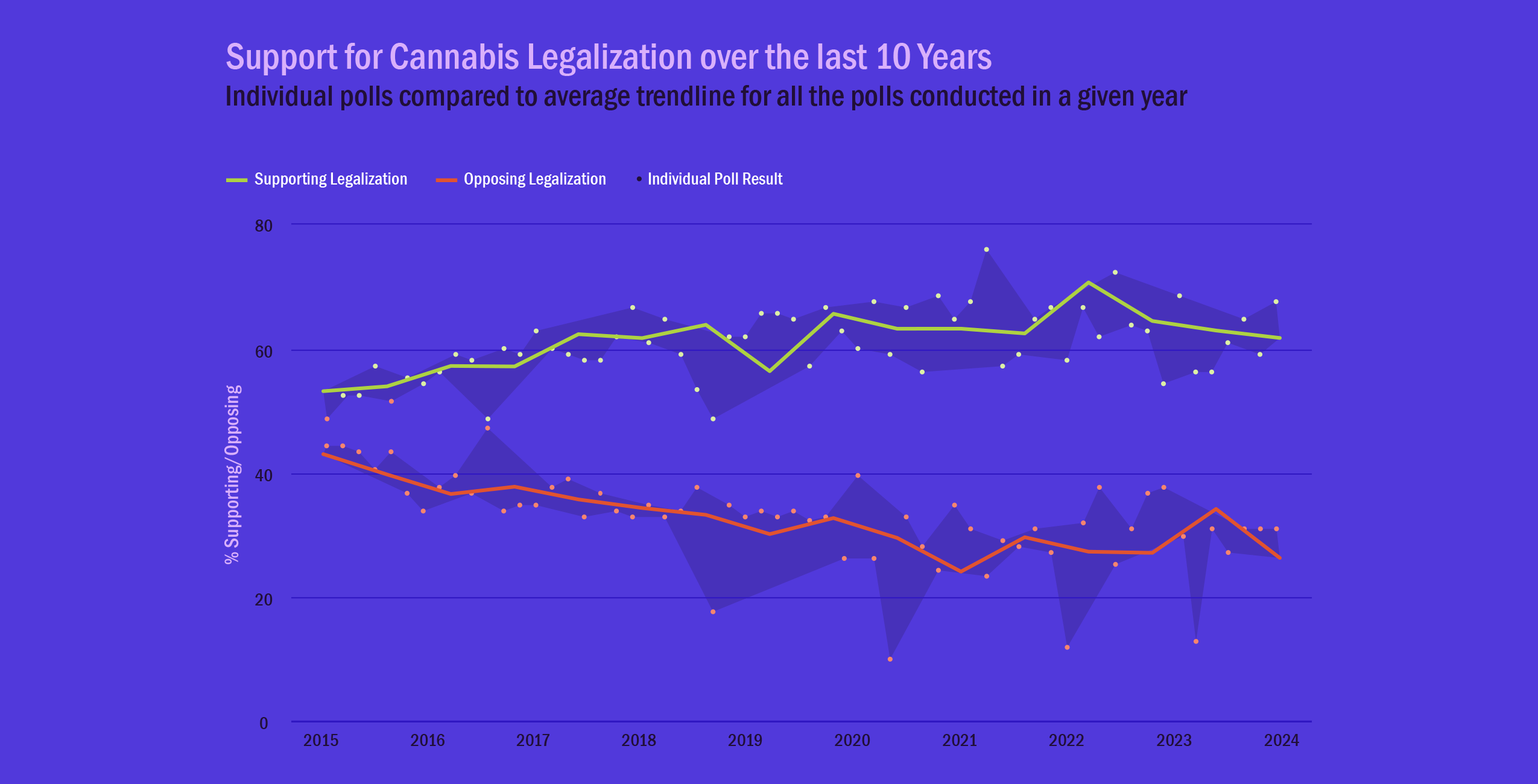
In 2015, 53% of US adults support legalization, but this quickly increased, breaking past three-fifths support in the second half of 2017 (62% support) and reaching a peak of 71% support in the first half of 2022. While support declined slightly after this high-point, it still stood at 62% in the first half of 2024.
Firstly, this is a robust demonstration of something we’ve known for some time: the majority of Americans support legalizing cannabis. However, it also suggests that there may be a decline in support in the past couple of years, with early 2022 showing substantially higher support than 2023 or 2024. This was likely influenced by an SICPA/Harris Poll which found support at 78%, and clearly shows the danger in cherry-picking favorable results when looking for the answer to questions like this.
In the overall context of the results, the apparent decline in recent years doesn’t look so concerning. Prior to this, support was at 63%, and it had declined by to this point again by 2023, but the overall trend over the decade is of increasing support. In addition, the number opposed to legalization remains very low even in 2024, with only 26% against the idea, leaving 12% undecided.
Democrats, Independents and Younger Adults Are More Likely to Support Legal Weed
CBD Oracle also looked at how the results varied based on demographic and other subgroups. While most of these analyses showed no difference, two are worth mentioning.
Perhaps expectedly, political affiliation was a big factor in support for legal cannabis. Based on polls conducted in 2024, 71% of democrats favor legalization, compared to 64% of independents and 48% of republicans. Although republicans are predictably the least supportive, it’s notable that the split is close to 50-50, and it’s possible there will be majority support among republicans in the next few years.
The other major difference was with age. Two-thirds (66%) of adults aged under 45 supported legalization, compared to 60% support among those aged over 45. Here, it’s important to note that both groups supported legalization overall.
Will Florida and South Dakota’s Upcoming Ballot Initiatives Pass?
While there are also relevant ballot initiatives in Nebraska and North Dakota, the two states with upcoming votes and enough polls to analyze were Florida and South Dakota.
For Florida, polls conducted in 2023 showed around 66% of voters in favor of legalization, but the overall result for 2024 declined to 57%. This is concerning for advocates in the state, since the initiative needs 60% support to pass, but there is good news hiding in the details. The two polls conducted in June 2024 found 66 and 64% support, and with a few months of campaigning left, it’s likely that the initiative will pass and Florida will legalize weed.
For South Dakota, the news is less positive. Two polls from 2023 analyzed via Monte Carlo showed 47% support, and the only poll conducted in 2024 put support at just 41.6%. Unfortunately, unless there is a drastic change in the coming months, South Dakotans will have to wait longer to get legal cannabis.
Conclusion: Support for Legal Cannabis Remains High, Despite Recent Declines
CBD Oracle’s analysis shows that support for legal cannabis remains high among Americans, and casts doubt on the relevance of recent declines in support. With a consistent trend towards increasing support and opposition to marijuana legalization remaining low, the data shows that the new “norm” is over three-fifths of Americans supporting legal weed. Individual polls may buck this trend, combining the polling helps you see the overall picture without being misled by individual results.
The tide has already turned; support for legal cannabis is here to stay.
You can access the full report here (PDF).
Member Blog: Understanding Michigan’s Booming Pre-Roll Market and Cannabis Testing Requirements

There is no hotter pre roll market in the country than Michigan.
With an average unit price of $6.16 – one of the lowest in the country, according to cannabis analytics firm Headset – retailers have sold more than 56.7 million units for a total of more than $349.8 million through the first seven months of 2024. That puts the state of Michigan in the top spot for pre-roll units sold and second place – to much larger California – in pre-roll revenue.
And sales are actually accelerating, with Michigan posting record high pre-roll sales numbers of nearly $54.9 million in July 2024.
But if you want to compete in the Great Lakes State’s exciting and expanding marketplace, you are going to need to make sure you understand and follow Michigan’s cannabis testing program.
In Michigan, state law requires all “raw plant material” be tested for the following:
- Moisture content and water activity;
- Residual pesticides and chemicals;
These tests are primarily implemented to safeguard consumers from hidden risks in cannabis products.
“Laboratory testing minimizes the risk of exposure to pesticides, microbes, heavy metals, molds, and residual solvents by providing consumers with information about the products they are purchasing and helps to prevent consumption by sensitive populations,” reads the “Sampling and Testing Technical Guidance for Marijuana Products” document created by the state’s Cannabis Regulatory Agency.
For example, moisture content and water activity measurements are indicators of potential mold growth. When water activity exceeds 0.70 Aw, it creates an environment conducive to mold development, which can be detrimental if ingested. This is why Michigan, like many other states, has set a maximum water activity limit of 0.65 Aw for flower and pre-rolls.
Heavy Metals Testing in Michigan
Heavy metals are absorbed through a plant’s roots and can damage all of the body’s vital systems, including the respiratory system, the central nervous system and the reproductive system, even in small doses. That’s why Michigan, like all states, requires products to pass strict heavy metals testing.
But where most states limit testing to the “Big Four” heavy metals of mercury, cadmium, lead and arsenic, Michigan goes a step farther, joining a handful of states that require testing for chromium and even adding nickel to the list as well.
Microbials and Mycotoxins
Though certainly dangerous, heavy metals are less of a threat to human health than microbials and mycotoxins.
Michigan requires testing for standard microbials like yeast, mold, E. coli and salmonella, as well as Aspergillus flavus, fumigatus, niger and terreus.
As for mycotoxins, toxic compounds produced by molds, such as Aspergillus, can suppress the immune system and cause liver damage, so testing for them is certainly a health and safety issue. Michigan law requires testing for Aflatoxin B1, Aflatoxin B2, Aflatoxin G1, Aflatoxin G2 and Ochratoxin A, requiring all to be less than 20 parts per billion to receive a passing grade.
Pesticides and residual chemicals
Michigan allows the use of some pesticides and other chemicals on cannabis, but only those appearing on the Michigan Marijuana Pesticide List, which was updated in early 2024. Pesticides on that list have been reviewed for use by the Michigan Department of Agriculture and Rural Development (MDARD) and may be used in accordance with the label instructions.
For testing purposes, state law requires labs check cannabis for 58 different residual chemicals, each with their own action limits.
Keeping your pre-rolls in compliance
Michigan regulations require tests be conducted in the product’s “final form,” though that applies to the flower itself, according to an email from the Cannabis Regulatory Agency.
“If the pre-rolls were tested as flower, that would be considered final form testing unless something was added to materially change the product,” they wrote.
But with so much time and effort spent ensuring your cannabis stays in compliance with state regulations, why would you want to pack it into pre-rolled cones that haven’t also been tested?
To ensure your cannabis stays clean, only use pre rolled cones that that have also been tested for microbials, pesticides and heavy metals. Medical patients in particular need to be careful to ensure that the paper in their pre-rolls isn’tgoing to make them sick, whether they buy them at a dispensary or pack pre-rolls at home.
In fact, a study from California’s SC labs found that 11% of rolling papers they tested would fail that state’s testing regiment, which doesn’t even include Chromium, and that 90% of rolling papers contained heavy metals with more than 8% containing them at a rate above the allowable limits.
In fact, this year, a team of researchers from Michigan this year tested 53 commercially available pre rolled cones and rolling papers and found varying levels of heavy metals throughout the samples, many of which would have caused failures if included in testing.
“Even if testing is not required, any one issue can harm your brand,” says Custom Cones USA Compliance Manager André Bayard. “It’s important to make sure you work with a company that is as focused on keeping your products in compliance as you are.”
Bayard always recommends confirming your pre-roll supplier has COAs available to prove their products are clean and will pass tests, or will send you samples for you to test before committing to a full order.
“Make sure your supplier is focused on those requirements and is trying to set the industry standard with their products,” Bayard says.
Join Us for More Exclusive Insights on the Michigan Marketplace
Striving to stay informed about Michigan’s dynamic cannabis industry? Mark your calendars for our upcoming Michigan Stakeholder Summit being held in Detroit, MI on Thursday, September 12th.
At the Michigan Stakeholder Summit 2024 you’ll be able to dive deep into the latest trends, regulations, and opportunities shaping Michigan’s cannabis landscape, including hearing directly from Brian Hanna, Executive Director of Michigan’s Cannabis Regulatory Agency. All industry professionals are invited; NCIA members attend free. Register here to secure your spot.
Member Blog: The Importance of Job Descriptions in the Cannabis Industry
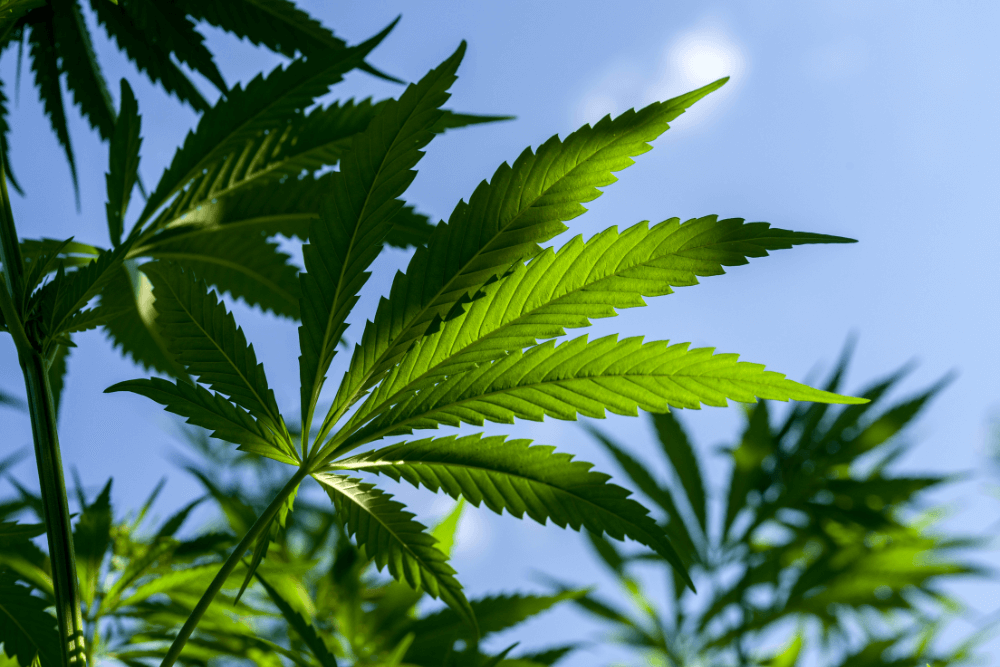
As the cannabis industry continues to grow, businesses face unique challenges, particularly in Human Resources. One critical, yet often overlooked aspect, is the creation and maintenance of clear, effective job descriptions. At Deliberate HR, we understand the well-crafted job descriptions are more than just a formality- they are essential tools for success in the cannabis sector.
Why are job descriptions so important?
-
Defining Roles and Responsibilities
Job descriptions provide clarity by defining the specific roles and responsibilities of each position. In an industry as dynamic as cannabis, where job roles can vary widely- from cultivation to sales to compliance- clear definitions help employees understand their duties and how they contribute to the organization’s goals.
-
Attracting the Right Talent
In a competitive job market, a well-written job description can be the difference between attracting top talent and struggling to fill positions. A precise and appealing job description helps potential candidates understand the role and align their skills with the company’s needs, making the recruiting process more efficient and effective.
-
Ensuring Compliance and Legal Protection
Given the complex regulatory environment in the cannabis industry, job descriptions play a crucial role in compliance. They ensure that roles are aligned with the industry regulations, including safety standards and legal requirements. Additionally, job descriptions can serve as legal documentation, protecting the company in cases of disputes related to employee duties or performance.
-
Enhancing Employee Engagement and Retention
When employees understand their role and how it fits into the larger company mission, they are more likely to feel engaged and motivated. Job descriptions that clearly outline growth opportunities within the company can also boot retention, as employees see a clear path for advancement.
-
Supporting Organizational Structure and Growth
As cannabis businesses expand, job descriptions help maintain an organized structure. They ensure that each role is defined and aligned with the company’s strategic objectives, facilitating smoother scaling and growth. This is especially important in a fast-evolving industry where companies need to adapt quickly.
At Deliberate HR, we recommend that cannabis businesses approach job descriptions with intention and precision. Here are a few tips:
- Be specific and clearly define the duties, responsibilities, and expectations for each role.
- Specify the qualifications needed, including industry-specific knowledge, licenses, or certifications.
- Address any legal or regulatory responsibilities associated with the role.
- Regularly review and update job descriptions to reflect changes in the role or industry.
Job descriptions are more than just a hiring tool- they are a strategic asset that can drive success in the cannabis industry. By clearly defining roles, ensuring compliance, and aligning employee expectations with company goals, well-crafted job descriptions are a cornerstone of effective HR Management.
Member Blog: Cannabis Risk in Distribution – Navigating the Road of Theft, Auto, and More

Welcome back to the unfolding chapters of our Cannabis Risk Management series. In our preceding blogs, we intricately explored the risks woven into cultivation and the dynamic challenges faced by the retail sector. Now, our compass directs us towards the distribution sector, where the landscape extends far beyond the boundaries of a single location.
The Mobile Risks of Cannabis Distribution
At the beating heart of the cannabis industry, distribution orchestrates the seamless movement of products from cultivators to consumers. However, this fluidity introduces unique risks, with theft and auto incidents assuming prominence in the dynamic narrative.
-
Theft in Motion: A Growing Threat on the Move
Unlike the static nature of cultivation and retail spaces, the distribution sector is marked by constant motion. The mobility of distribution vehicles renders them susceptible to theft, both in transit and during stops. The repercussions extend beyond the immediate loss of inventory, amplifying the financial impact. Navigating this evolving threat demands heightened vigilance and strategic risk mitigation.
-
Auto Incidents: The Road Ahead is Paved with Risks
Transporting cannabis products along the highways introduces inherent risks of auto incidents. From road accidents causing damage to products and vehicles to potential liabilities, the road ahead is fraught with financial pitfalls. To safeguard the integrity of the distribution network, a comprehensive insurance policy specifically tailored to cover auto incidents becomes indispensable.
Mitigating Risks in Cannabis Distribution
-
Strategic Route Planning: Mapping the Path to Security
In the dynamic landscape of distribution, strategic route planning emerges as a linchpin in theft prevention. Evading high-crime areas, implementing secure parking protocols, and leveraging technology for real-time tracking are suggested ways to build a robust risk mitigation strategy. By fortifying the journey from cultivator to consumer, strategic route planning becomes a proactive defense against evolving threats.
-
Property in Transit Coverage: Protecting Cargo on the Move
A vital aspect of safeguarding cannabis inventory is ensuring robust property in transit coverage. This specific coverage protects the cannabis products while they are on the road, addressing potential losses due to theft, accidents, or other transit-related incidents. Implementing this coverage can significantly reduce the fiscal impact of such events.
-
Advanced Fleet Management for Safety: Beyond the Roads
Elevating the safety and security of distribution vehicles involves investing in advanced fleet management systems. Real-time tracking, continuous monitoring of driver behavior, and implementation of preventive maintenance measures collectively reduce the risk of both auto incidents and theft. This holistic approach not only protects the products but also ensures the well-being of the team steering the distribution network.
-
Employee Training for Security: Empowering the Frontline
Empowering the distribution team with comprehensive training in security protocols and emergency response measures is foundational. A well-trained team becomes an invaluable asset, making a significant difference in minimizing the impact of theft or auto incidents on business operations. Their heightened awareness and proactive response contribute to a secure and resilient distribution process.
Tailored Insurance Solutions for Distribution
As in cultivation and retail, standard insurance policies may fall short in addressing the evolving risks faced by cannabis distribution. Collaborating with an insurance advisor specializing in cannabis is not merely advisable; it is imperative. Tailored policies comprehensively covering theft, auto incidents, and other challenges unique to the distribution sector provide a robust safety net for operations.
As we embark on the next leg of our journey into the world of cannabis manufacturing, unraveling diverse risks related to work comp, fire, spoilage, humidity, smoke, and equipment breakdown, join us in this quest for knowledge and empowerment. Our mission is to equip you with unparalleled insights and insurance solutions, fostering sustained success in the ever-evolving landscape of the cannabis industry.
For more information, please reach out to Valerie Taylor, Vice President (National Cannabis Practice Leader), Liberty Company Insurance Brokers.
Committee Blog: The Benefits of Intrusion Systems in Cannabis Retail – Ensuring Security and Compliance

The cannabis industry has seen tremendous growth in recent years, with more and more states legalizing its use for medical or recreational purposes. With this expansion comes a need for comprehensive security solutions to protect businesses from potential threats. While they are just one component in a comprehensive security strategy, intrusion systems play a crucial role in ensuring the safety of employees, customers, products and cash for cannabis retailers.
In this blog post, we’ll dive into the benefits intrusion systems specifically tailored for cannabis industry retailers and consultants – and what a full-service security provider like Vector Security, which offers a dedicated cannabis team of experts – can provide when it comes to protecting your business.
Enhanced Security
One of the primary reasons why intrusion systems are essential in cannabis retail is their ability to enhance overall security. By monitoring and detecting intrusion, these systems prevent unauthorized entry into sensitive areas such as stock rooms, storage areas, cash registers and safes, and computer/networking equipment and devices. This level of control significantly reduces the risk of break-ins, internal and external theft, vandalism and other criminal activities by limiting access to authorized personnel only.
Immediate Alerts
Intrusion systems are equipped with advanced technology that can detect unauthorized entry or tampering with security equipment. Motion detectors, glass-break and door/window sensors trigger visual and audible alarms to ward off intruders, while providing real-time alerts to store owners and other stakeholders as well as alarm monitoring operators. If the emergency is real, authorities are dispatched to the location of the intrusion. This swift response time is crucial in preventing further damage or loss. Professionally monitored intrusion systems ensure your cannabis facility is protected around the clock – during and after business hours, and even on holidays.
Compliance with Regulations
Operating within the cannabis industry means complying with strict regulatory frameworks that can vary from state to state. These regulations often include guidelines related to security and surveillance. Intrusion systems are a vital component in meeting these requirements. By maintaining accurate records of security incidents, cannabis retailers can demonstrate their commitment to compliance during audits. Here is where a seasoned security provider, like Vector Security, can advise and design a system that complies with regulatory requirements.
Protection of High-Value Products
Cannabis products have significant value, making them attractive targets for criminals. Whether it’s the actual flower, edibles or concentrates, protecting these assets is crucial for a successful business. Intrusion systems help safeguard inventory, reducing the risk of internal and external theft and ensuring product availability for legitimate customers.
Cash Management
Cash remains a primary form of payment in many cannabis dispensaries. This makes retailers vulnerable to theft and robberies. In areas where cash is kept, intrusion systems can provide an added layer of security by securing cash registers, safes and other cash-handling areas.
Panic Alarms
In addition to detecting unauthorized entries, modern intrusion systems often include panic alarms. These alarms allow employees to quickly signal for help in emergency situations. Whether it’s a medical issue, a threat from a customer or any other crisis, panic alarms provide immediate assistance. Install panic buttons around the store and in areas with cash so employees can safely and discreetly summon authorities in the event of an emergency, like during a burglary or hold-up robbery.
Scalability
As the cannabis retail industry continues to expand, scalability becomes crucial. An initial investment in a comprehensive and flexible security solution ensures that the system can grow along with your business. Whether opening additional stores or cultivation facilities, retailers should be able to seamlessly integrate new locations into their existing security infrastructure. Make sure your security provider can adapt your security solution to respond to your business’s changing needs, including responding to new threats or opportunities.
Conclusion
Intrusion systems are not only about preventing break-ins, they are also essential tools for maintaining compliance, protecting valuable assets, and ensuring the safety of employees and customers. By investing in robust security solutions, cannabis retailers can focus on their core business knowing that their facilities are well-protected.
Remember that while effective at providing a layer of protection, intrusion systems are just one component of a comprehensive security plan for cannabis businesses. It’s beneficial to work with a full-service security provider that can design a complete plan that integrates and streamlines all parts of your security, such as video surveillance, access control, fire and environmental monitoring, panic alarms and more. Working with a full-service vendor that has expertise in the cannabis industry ensures you’ll receive the range of products and services you need, with tailored solutions that meet the unique demands of your cannabis business.
Committee Blog: Breaking the Stigma – Cannabis in the Retail World

Published on behalf of members of NCIA’s Retail Committee
Cannabis, once relegated to the shadows of society, is making a significant push into mainstream America. However, the journey from prohibition to acceptance is faced with many challenges, particularly in the retail world. The stigma surrounding cannabis stems from historical, legal, social, and cultural factors, and lack of education, plays a role in shaping the stigma. In this blog, we’ll explore some of the roots of the stigma on cannabis and how the landscape is gradually changing.
The Historical Backdrop
The roots of cannabis stigma are deeply embedded in history. In the early 20th century, cannabis was criminalized in many parts of the world. The United States’ War on Drugs, which began in the 1970s, heavily penalized cannabis use, linking it to criminal behavior and societal decay. Media reports of cannabis users as lazy, unmotivated, or criminals; these negative stereotypes are what many believe to be true.
However, alongside this negative portrayal, there exists a rich history of cannabis as a medicinal plant. For centuries, cannabis has been used to treat a variety of medical issues. Ancient cultures across Asia, the Middle East, and Africa utilized cannabis for its therapeutic properties, including pain relief and anti-inflammatory benefits.
In more recent times, cannabis has shown promise in helping cancer patients manage symptoms such as nausea, pain, and loss of appetite. Additionally, it has been found to fight inflammation, which is beneficial in treating conditions like arthritis and multiple sclerosis. This positive history of cannabis as a healing plant is often overshadowed by its criminalization and the stigma attached to its recreational use.
Legal and Regulatory Hurdles
One of the most significant barriers to cannabis acceptance in retail is the complex legal landscape. In the United States, for instance, cannabis remains illegal at the federal level, despite being legal in several different states. This legal ambiguity creates uncertainty and fear among businesses, banks, customers as well as B2B consumers.
Moreover, the reluctance of banks and financial institutions to work with cannabis-related businesses due to federal regulations results in limited access to financial services and funding. This financial exclusion makes it difficult for cannabis businesses to operate and expand, perpetuating the stigma. It also makes it challenging for funding purposes for these businesses to continue to operate efficiently.
Social and Cultural Challenges
Public perception plays a crucial role in the acceptance of cannabis. Despite increasing acceptance, many still view cannabis use negatively and as a Schedule 1 drug, influenced by concerns about health impacts, addiction, and moral values. Workplace policies that maintain strict no-drug stances, regardless of legal status, also contribute to this negative perception. Enhancing education on cannabis can help mitigate this stigma within our culture, which in turn will aid in positioning the cannabis industry as a credible sector in the eyes of consumers, banks, and other business sources.
Retail Industry-Specific Issues
In addition, mainstream retailers are often hesitant to carry cannabis products due to fear of backlash from conservative customers or communities, which limits the visibility and availability of these products in the broader spectrum.
Furthermore, stringent marketing and advertising regulations restrict cannabis businesses from effectively reaching new customers and normalizing their products. Social Media advertising is prohibited as well as certain television channels.
Conclusion
Resolving the challenges surrounding the stigma of cannabis in the retail world requires a multifaceted approach. Firstly, education plays a pivotal role: increasing public awareness about the medicinal benefits of cannabis and dispelling myths through targeted campaigns can shift negative perceptions. Secondly, advocating for legislative reform to align federal and state laws can provide clarity and confidence for businesses to operate effectively. Moreover, fostering open dialogue among stakeholders, including policymakers, industry leaders, and the public, can promote understanding and acceptance. Lastly, mainstream retailers can be encouraged to embrace cannabis products through initiatives that demonstrate responsible consumption and highlight regulatory compliance, thereby normalizing its presence in the retail market. By addressing these aspects comprehensively, we can gradually reduce stigma and integrate cannabis as a legitimate and beneficial sector within the retail market.
Member Blog: The Science of Smokeability

While there’s a lot more science involved in the cannabis industry today than back when folks were growing in closets or on hidden hillsides, none of that science has focused on the end user.
We know how to increase yield and cannabinoid production, for example, but there hasn’t been any real research done on how cultivation techniques or delivery methods affect the smokeability of the product from the consumer standpoint.
Until now, that is.
The cannabis industry is entering a new era of scientific rigor and consumer-focused research with the launch of a groundbreaking study called The Science of Smokeability (SOS). This multi-year research project, spearheaded by Custom Cones USA and the DaySavers brand in partnership with the Cannabis Research Coalition and The Network of Applied Pharmacognosy (NAP), aims to revolutionize our understanding of cannabis cultivation, processing and consumption.
Unlike previous research that primarily focused on things like cannabinoid percentages, the SOS study seeks to establish clear links between cultivation and manufacturing practices and the end-user experience. By doing so, it has the potential to transform product quality, consistency and safety across the industry.
A Comprehensive Approach
One of the most innovative aspects of the SOS study is its comprehensive approach. It combines controlled laboratory experiments with consumer research, creating a holistic view of the smoking experience. This methodology allows researchers to analyze various factors that influence cannabis quality, including mineral content, nutritional content (flushing), nitrosamines (potential carcinogens), moisture content, and their effects on ash color, smoke composition, and overall smoke quality.
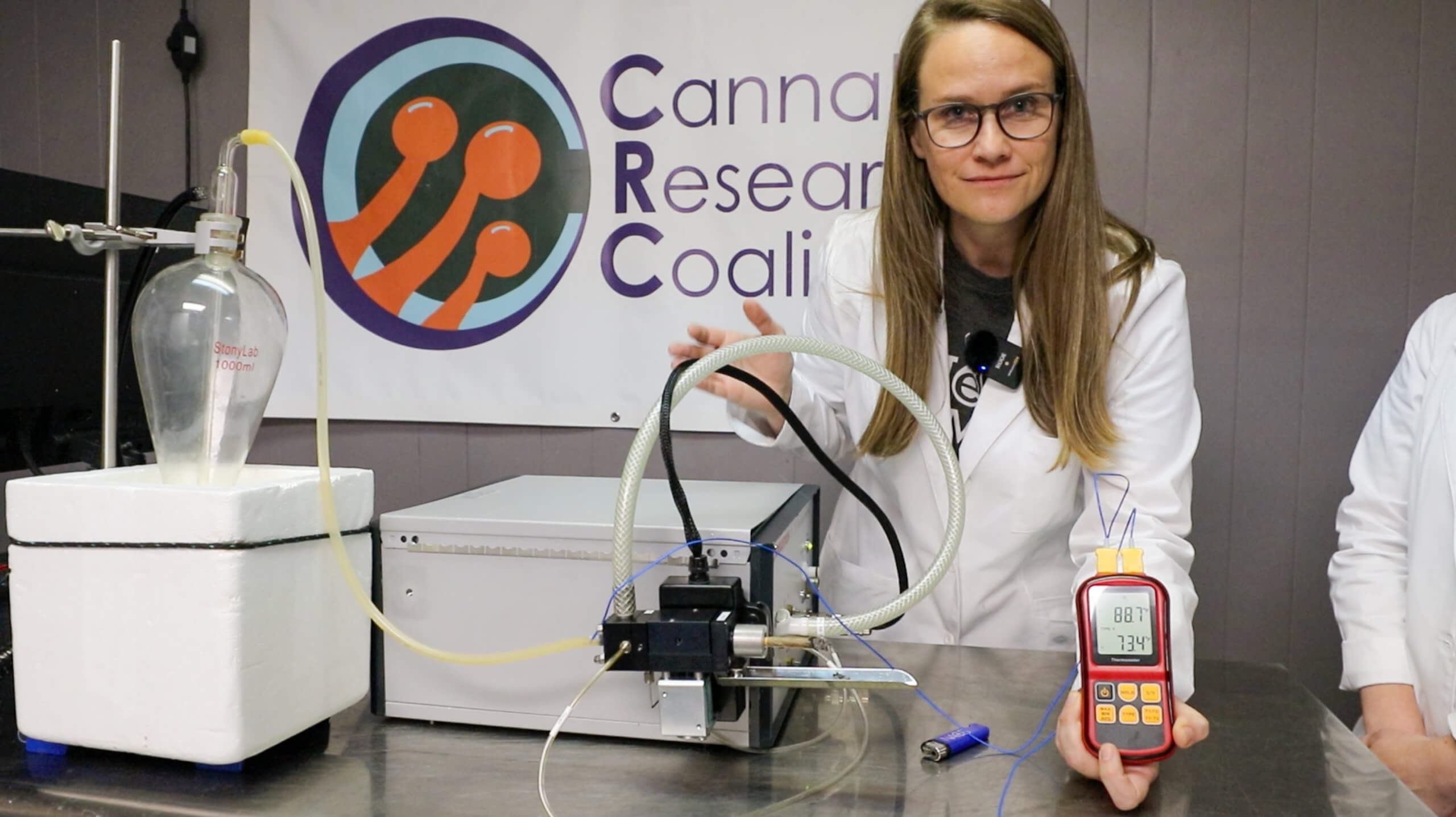
On the lab side, the SOS will be led by conducted by qualified researchers from various organizations including The Cannabis Research Coalition (CRC), an academic cultivation research group that is developing advanced cultivation techniques aimed at optimizing yield and quality of medicinal cannabis, and The Network of Applied Pharmacognosy (NAP), a nonprofit organization focusing on providing quality cannabis materials and tracking the experience of users.
Dr. Allison Justice and Dr. Markus Roggen, two of the top researchers on the study are previously known for their groundbreaking work in exploring the color change of ash in cannabis smoking. The SOS study has also partnered with Controlled Chemistry, experts in cannabis smoke and inhalation studies for cannabis, leveraging cutting-edge technologies and methodologies.
“This cross-departmental research collaboration extends beyond mere acquisition of sustainable and profitable cultivation and post-harvest metrics; we are actively establishing the benchmarks for ensuring the highest standards in producing flower intended for combustion” said Justice, founder of the Cannabis Research Coalition.
To gain consumer insight, DaySavers will be paying 200 lucky people, drawn at random, to receive and smoke two pre-rolls and then provide feedback on the experience. That data will be combined with the lab work to create the final reports.
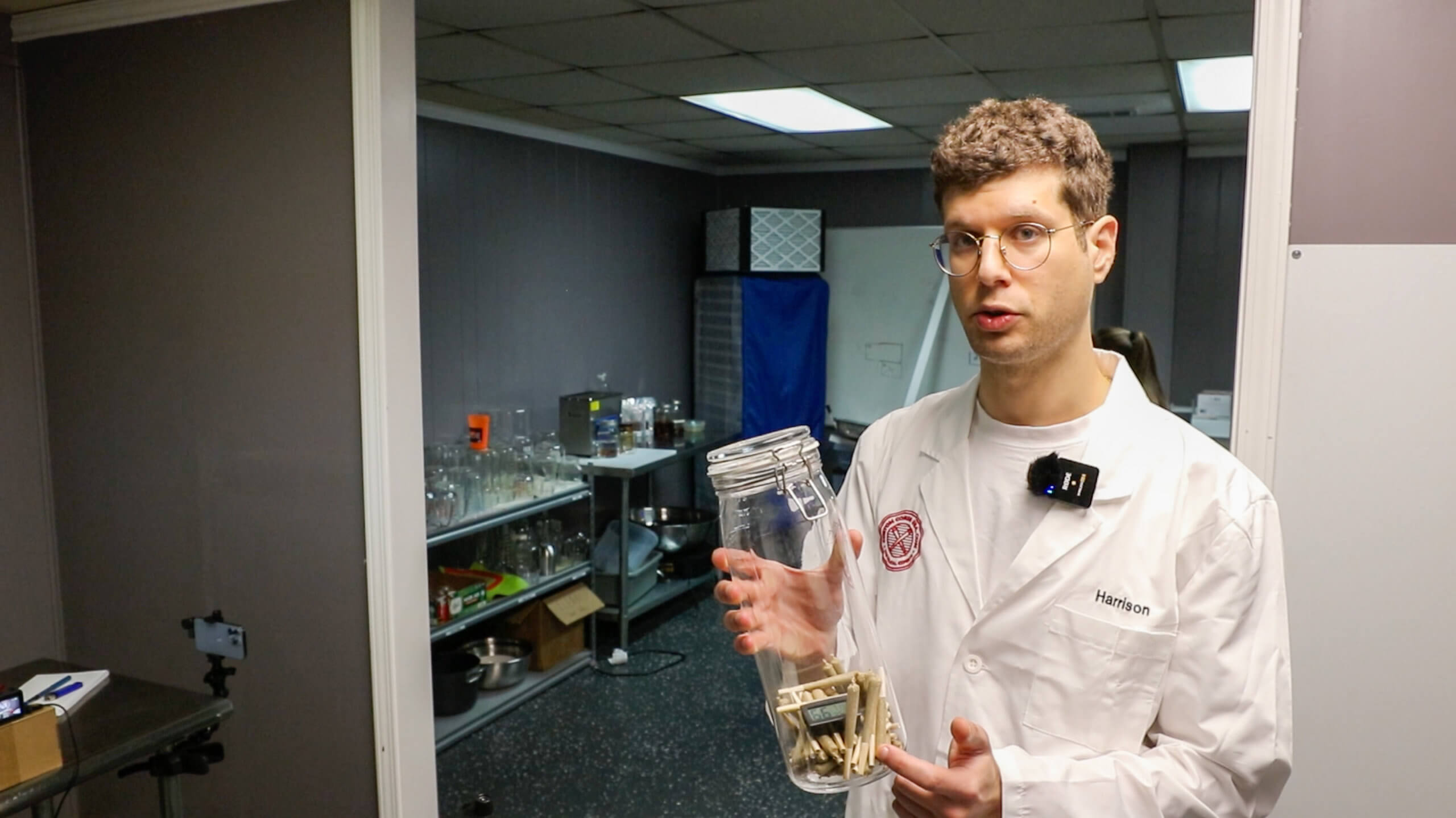
This unique and consumer-centric approach and focus on “smokeability” aligns with the industry’s growing focus on end-user satisfaction and, we hope, could lead to products that better meet consumer preferences.
Developing Standards
The first phase of findings is expected to be published in the coming months and will demonstrate how to optimize cultivation metrics to save time, money and resources while enhancing product quality.
The study will also include experiments on infused pre-rolls, testing different infusion processes and their effects on temperature and cannabinoid/terpene delivery.
We think the implications of this research for the cannabis industry will be far-reaching. By understanding how different cultivation and processing variables affect the final product, growers and manufacturers can fine-tune their practices to create superior cannabis products. This could lead to more consistent, higher-quality pre-rolls and other cannabis products in the market.
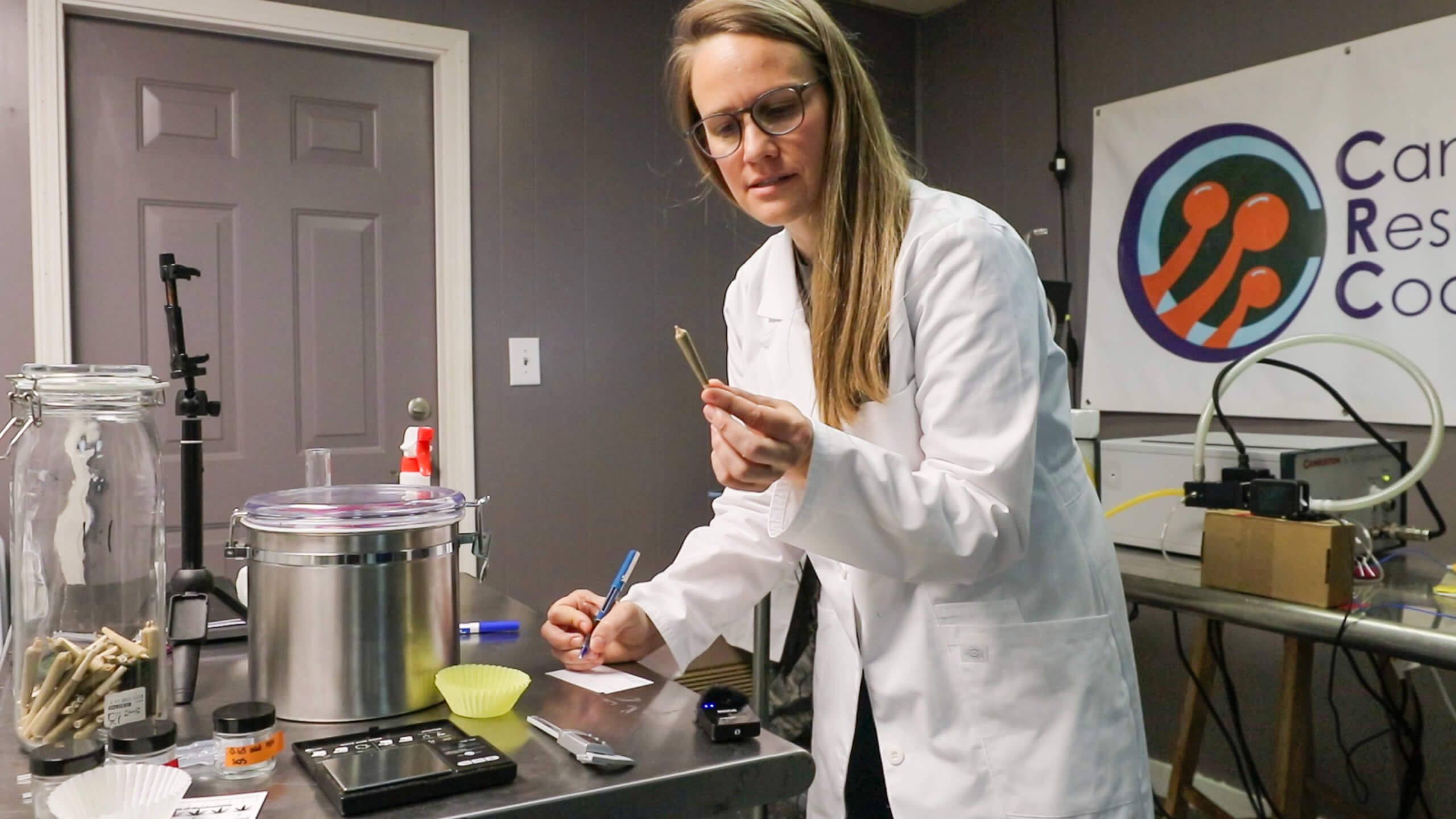
The findings from the SOS study will also be shared with ASTM International, an organization that establishes industry standards. The hope is that it leads to the development of new benchmarks for quality and safety in cannabis cultivation and product manufacturing. Moreover, by providing solid scientific data on cannabis smoke composition and quality, the study could influence cannabis policy decisions. This is particularly significant for states that are hesitant to permit smokable flower due to uncertainties about the substances produced in cannabis smoke.
For cultivators, the study could provide valuable insights into optimizing their growing techniques for better quality. Manufacturers could use the findings to improve their processing methods and create more appealing products. Retailers and budtenders could leverage the research to provide more informed recommendations to consumers.
Plus, the study’s focus on safety and quality could help address concerns about the health impacts of cannabis smoking. By identifying factors that contribute to a “safer” smoking experience, the industry could potentially mitigate some of the health risks associated with cannabis use.
At Custom Cones USA and DaySavers, we’re known for our commitment to transparency and the rigorous testing of our pre-rolled cones, as well as other products like blunt cones and the Smoke Temple Cross Cone, for pesticides, heavy metals and microbials. We do this, despite it not being required, because we believe it makes a better, safer final product for the end user. Our hope is that by focusing this study on “smokeability,” others in the industry will put the consumer first as well.
A New Kind of Study
The Science of Smokeability study marks a pivotal moment in the evolution of the cannabis industry. As the cannabis market continues to mature and evolve, research like the SOS study will be crucial in establishing cannabis as a legitimate, well-understood, and responsibly produced consumer product.
By bringing together scientific rigor, consumer experience and industry expertise, it has the potential to drive innovation, improve product quality, shape the future of cannabis cultivation and consumption.
The SOS promises to enhance our scientific understanding of cannabis as both a medicinal and recreational product, potentially revolutionizing how we approach cannabis cultivation, processing and consumption in the years to come.
And we’re excited to be a part of it.
Member Blog: Financial Services Survey – Seeking Licensed Cannabis Operators to Participate

As public opinion shifts and state and federal policies on cannabis continue to evolve, more banks and credit unions are venturing into this market. With competition intensifying, financial institutions must offer products and services that meet the changing needs of the industry.
Shield Compliance, a leading compliance platform for cannabis banking, is conducting a survey of licensed cannabis operators regarding their satisfaction with the banking partners, products, and services available to them. The survey allows licensed operators to offer valuable insights and shape financial institutions’ services going forward.
Shield welcomes all licensed cannabis operators to participate. The survey consists of short, multiple-choice questions and should only take about ten minutes to complete. You may answer the survey anonymously, or you may provide your contact information to be entered to win an Amazon gift card worth $200.
To participate in the survey, please click here or copy and paste it into your browser. Additionally, we encourage you to share this survey link with other cannabis operators within your network who may be interested in contributing to this study. The more diverse responses we receive, the more comprehensive our findings will be.
The survey will be available until August 9th.
Thank you for your participation.
Member Blog: Impact of Cannabis on Sleep Medication Use

Last year, Management Science Associates (MSA) partnered with Vireo Health of Minnesota to complete a first of its kind study that sought to analyze the relationship between opioid reduction and cannabis consumption (you can find more information on those findings in our previous post).
More recently, MSA has been exploring the impact of cannabis on sleep medication use. An estimated 30% of adults experience symptoms of insomnia, which can include difficulty falling asleep, staying asleep, or waking up too early. Patients with insomnia often rely on various prescription and/or over the counter sleep aids to manage their conditions, which can result in adverse effects, including the risk of abuse and cognitive impairment, especially in older adults. Fortunately, the increased acceptance of medical cannabis has resulted in many patients exploring it as a potential alternative.
Although previous studies have shed light on the impact of cannabis for insomnia, more research is needed to fully understand its potential and determine appropriate dosages and long-term effects. Using real-world data, MSA has conducted a study on patients diagnosed with insomnia to investigate the effectiveness of medical cannabis to reduce sleep medication use.
Methodology
The study included adults aged 18 and over, diagnosed with insomnia disorders based on ICD-10 codes, who have purchased cannabis products through medical cannabis dispensaries in Minnesota from 2016 to 2020. Using MSA’s patented de-identification technology, we linked each patient’s electronic health records (EHRs) with medical cannabis dispensary transaction records while protecting patient privacy.
We investigated the trends of cannabis products use in patients with insomnia, according to demographics, and quantified changes in sleep medication use over time, using the Defined Daily Dose (DDD) established by the World Health Organization (WHO) to obtain a ratio that reflects the patient’s daily medication intake in a standard measure. We analyzed the differences in medication use before and after cannabis use, and characterized the patients who experienced a reduction in sleep medication use.
Key findings included:
Demographics: The majority of insomnia patients participating in our study fall within the middle-aged bracket. Almost 50% of the participants were aged 35-50 years, closely followed by 44.4% within the 51-64 year age group.
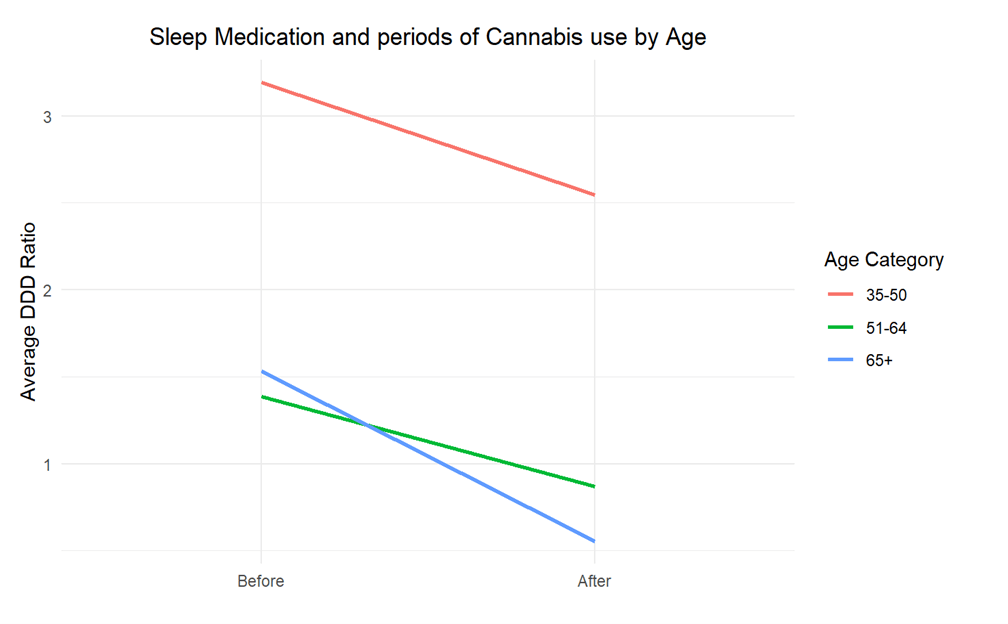
Decrease in sleep medication usage: Our results showed an overall 26.7% decrease in the defined daily dose (DDD) of sleep medications after cannabis use. Patients using cannabis experienced notable decreases in sleep medication use, with the most substantial improvements seen in individuals aged 50 and older. Specifically, those over 65 years old saw a dramatic 60% reduction. Meanwhile, the 51-64 age group benefited from a 39% reduction, and those aged 35-50 observed a 25% decrease. Patients 35-50 years old were using higher doses of Sleep medications than other age groups. Patients over 65 years old exhibited a more pronounced reduction in DDD ratios compared to other age groups. This suggests that older patients might benefit more significantly from cannabis use in terms of reducing their sleep medication intake.
Percentage Reduction of sleep medication by age category
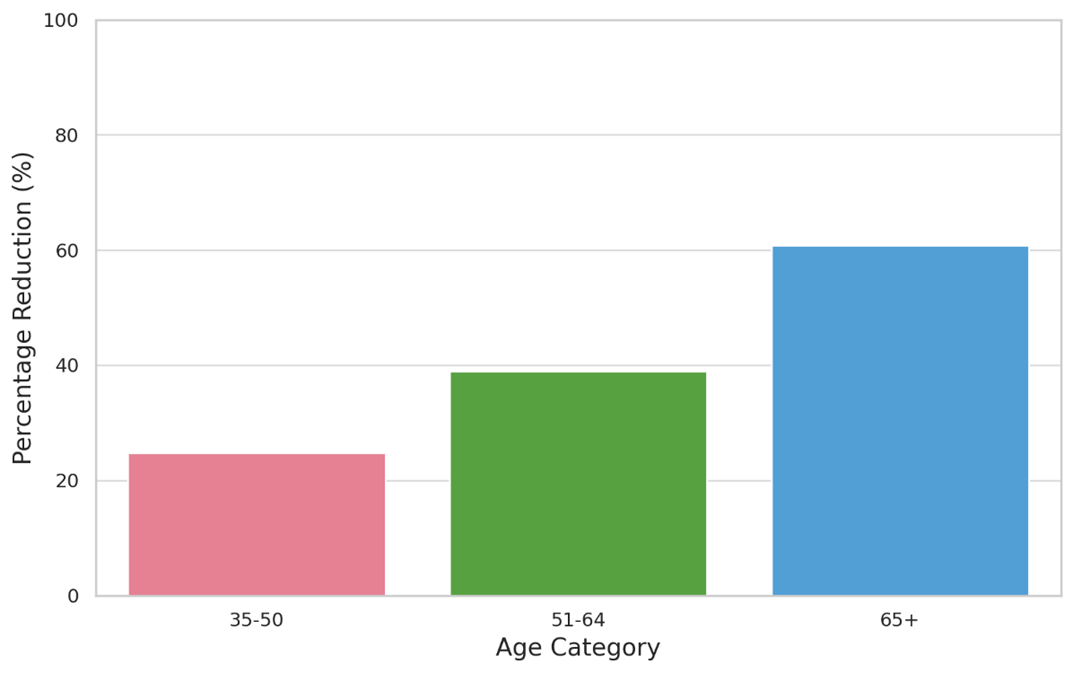
Reduction by THC:CBD ratio: Although most patients with insomnia in this study were using cannabis products with a ratio of 19:1, the THC:CBD ratios that were most effective to reduce sleep medication use were 4:1. 20:1, and 1:1.
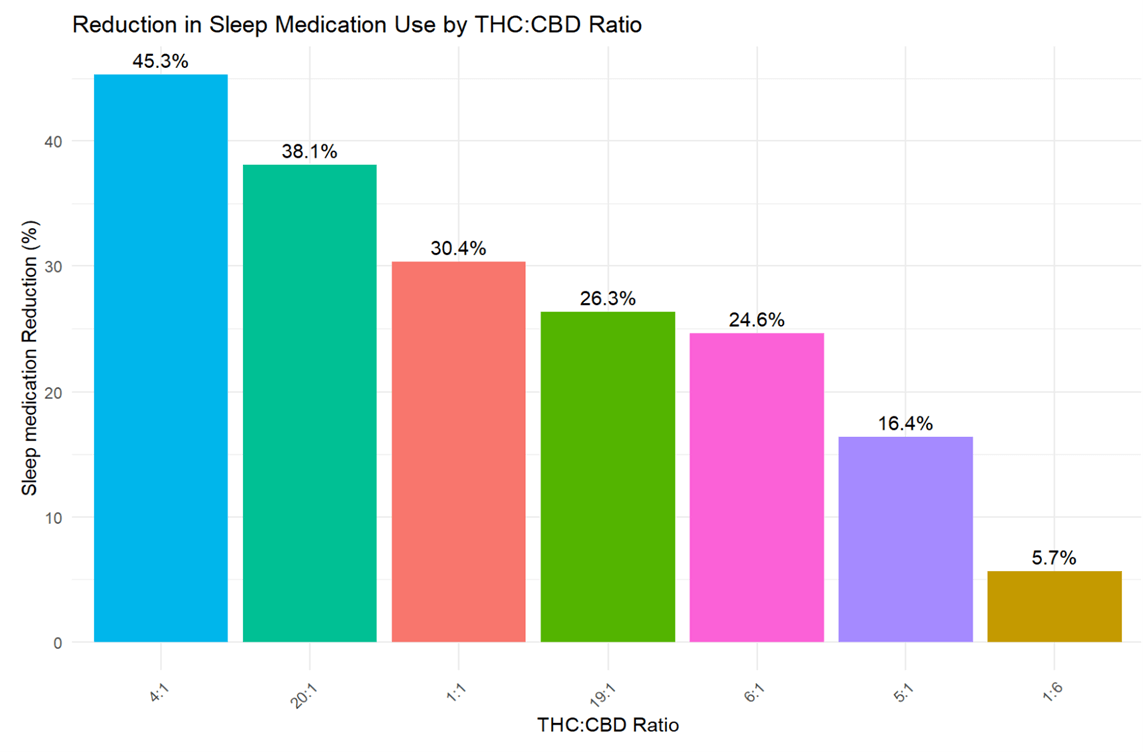
Reduction by Type of sleep medication: In our analysis, we observed a significant reduction in the use of various sleep medications among patients who began using cannabis, with benzodiazepines showing a particularly notable decrease of approximately 50% of the daily dose. The group of patients that experienced a reduction of sleep medication during cannabis use were mostly using Benzodiazepines, among which the most used were Alprazolam, Lorazepam, Diazepam, and Clonazepam.
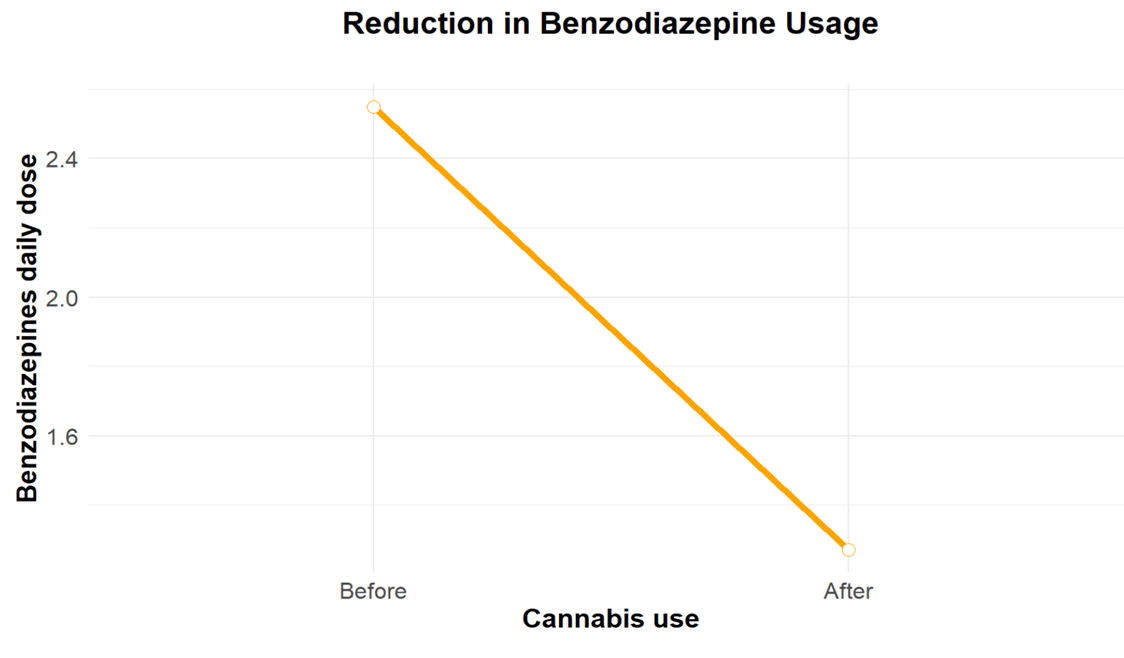
Product Form and Reduction of Sleep Medication: Patients who were using cannabis in capsules experienced the most reduction in sleep medication use. Capsules can have a high bioavailability, meaning more cannabis enters the bloodstream compared to tablets, which could make them more effective. Gummies were most used by patients using high dosages of sleep medications at baseline.
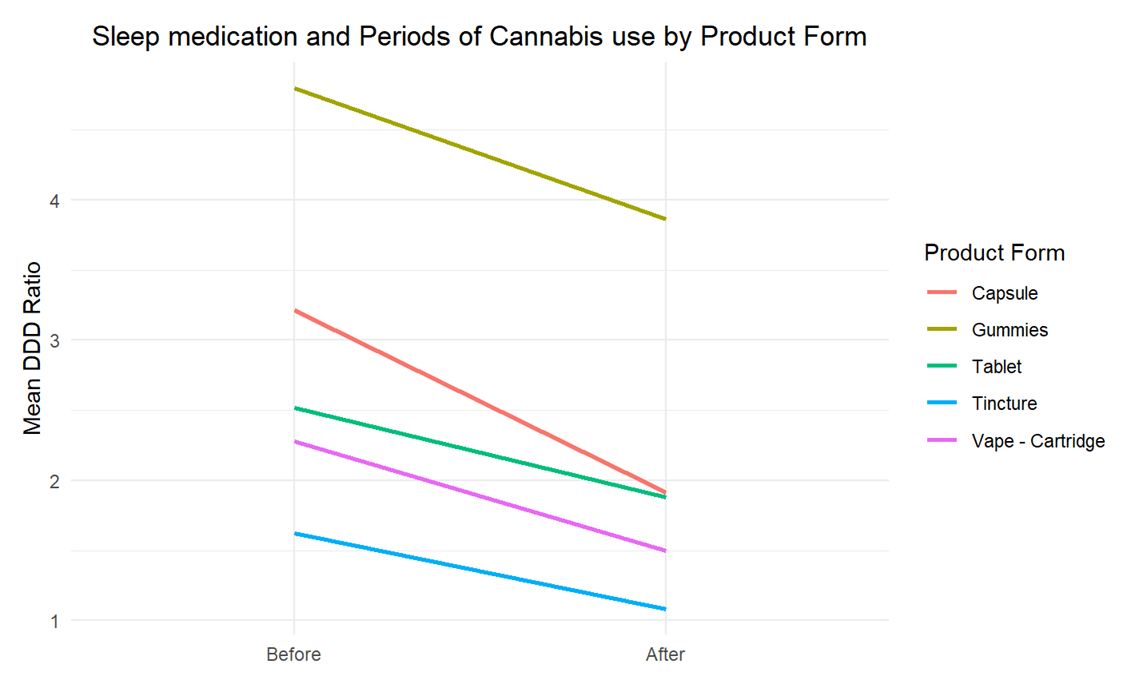
Milligrams of THC: Cannabis products with higher amount of mg of THC were corelated with higher daily dose of sleep medications. This supports previous literature about the effect of THC on insomnia, where lower contents of THC being most effective to alleviate insomnia are reported.
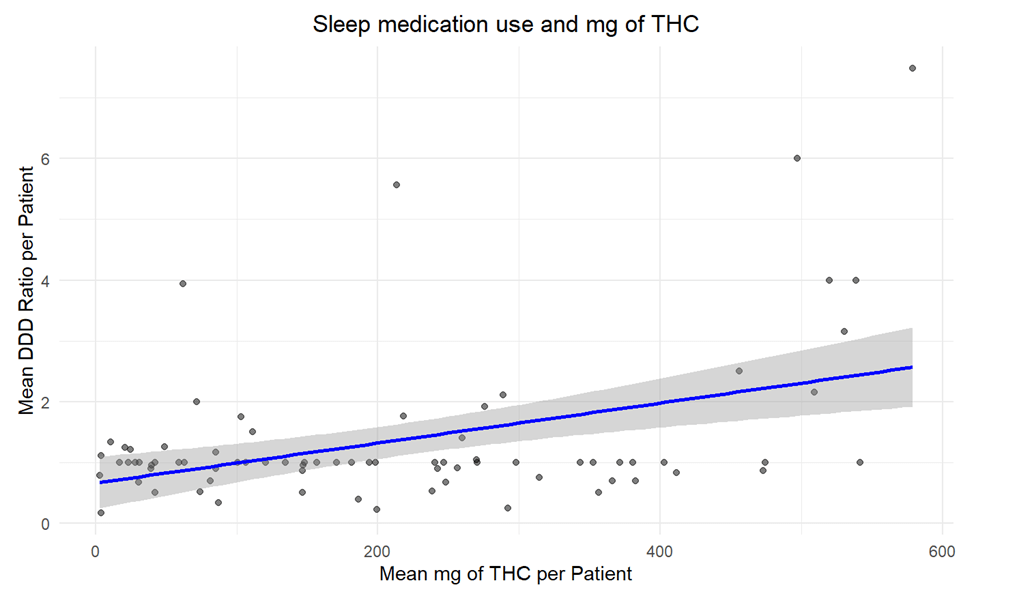
Conclusion
These preliminary findings suggest that cannabis has the potential to significantly reduce the use of traditional sleep medications, particularly among older adults. The preference for specific forms of cannabis in patients using high doses of sleep medications, and a higher effectiveness of capsules in reducing its use highlights important considerations for patient preferences and adherence. As MSA continues this research, we aim to further elucidate the mechanisms behind these trends and refine our understanding of how cannabis can be optimized for managing insomnia and sleep disturbances.
Additionally, MSA aims to support the development of comprehensive guidelines to help clinicians incorporate cannabis safely into insomnia treatment plans. A high-level of evidence from real-world data can help regulatory bodies to update policies based on the latest research and implement educational programs for both healthcare providers and patients about the safe use of cannabis for sleep disorders.
If you are interested in learning more or getting involved with MSA by being a prominent leader in cannabis research, we’d love to hear from you. You can reach out to Madeline Grant at mgrant@msa.com to schedule an introductory call.
Committee Blog: Time to Hire
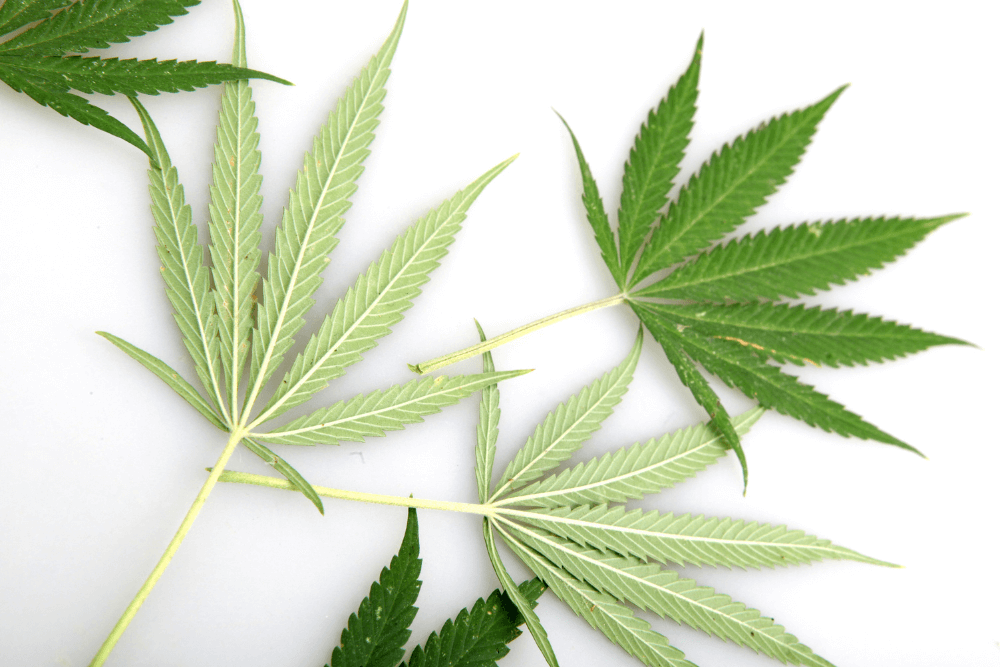
The road to opening a licensed cannabis business is a long one. You have managed to navigate through a competitive and complex licensing process. You have convinced your local community to give your company a shot. You have beautified the area surrounding your business. You have secured your supply chain, and you even opened a special account at a cannabis bank to deposit all that cash. You have hired armed security, and even though you are paying the company 3X what you’re making, it’s okay because you and your staff are safe. You even survived the facility build-out, and hopefully, you have about six months of capital. What an accomplishment. Bravo! You did it! Wait… you need a team to help you operate this beast. Time to hire!
I heard someone say, ‘Great things in business are never done by one person. They’re done by a team of people.’ I would guess that if you have made it to the finish line, you’re likely to already have a team. Now it’s time to expand that team. As if the odds aren’t already stacked, in the fast-paced world of cannabis retail, turnover rates are hitting a staggering 55% within a year, per headset.io as of November 2023. I learned about this very early on when I began my research. I needed to know why and what I could do to avoid more than half my staff quitting within the first year. There were some common factors that led to employee attrition. I was a bit surprised to hear that pay wasn’t a top factor. What I learned was budtenders, in particular, didn’t feel the company provided any kind of staff development. Many instances described a poor management staff, and many felt unappreciated and overworked.
When we started this thing, it was important to make sure we could create opportunities for others. I’ve worked for both big and small businesses, some corporate and some non-corporate. I have had some good managers and some bad ones. I learned something from each job I’ve held. I vowed to make sure my staff never looked at our managers and our company and put us in the bad category. Trust is earned, and leadership can never be forced. I opened doors on April 22nd, and we hired 21 part-time employees. I will follow up in 12 months to see if I beat the odds. I’ve done it before.
It was through the NCIA network I met Carlo, and he had me go through a workshop. What I learned was, first, we needed to ask ourselves: What are our principles at Banyan Tree? My team is amazing, and we have been together so long we trust in each other’s expertise to maintain a harmonious environment. We want to make sure the staff feels the same way. So collectively, we created a list of principles. Next, we posted the job position. The response was overwhelming. Within 24 hours, we had close to 500 applications. We narrowed that down to 50. We scored the candidates based on their work experience and the video response they provided, aligning with our principles. Next, we scheduled the interviews. We called each candidate to share what they could expect during the interview. We sent them the list of our principles. We would be conducting the interview using the S.T.A.R. method: Specific, Task, Action, Result. That means the questions we ask will all be related to their work experience. We expect the answers you give to describe an experience that uses the S.T.A.R method response. It really helps us get to know the candidates during the interview, and you can tell someone is being genuine when they can recall an experience they had while working at previous jobs. There were about 21 of those interviews that went on for a full hour. We hired 21 amazing people. They all feel like they are part of something special. It’s my job to keep my promise.
It’s important to continue developing and educating the staff to help them get better at their skill. It is necessary to provide them with the tools they need to perform their job. Stuff like scanners and POS systems and card readers need to work. Technical issues disrupt the flow, but that’s controllable. Communication and trust are key. Without it, you’re doomed. Appreciation and praise go a long way. We need customers to stay in business, but we can’t do business without staff. My philosophy is that my employees are everything. As long as they love their job, our guests are going to reap the benefits.
Committee Blog: Regulations in the Inhalable Cannabis Space – A Call for Sensible Flavor Regulation for Cannabis Vapes
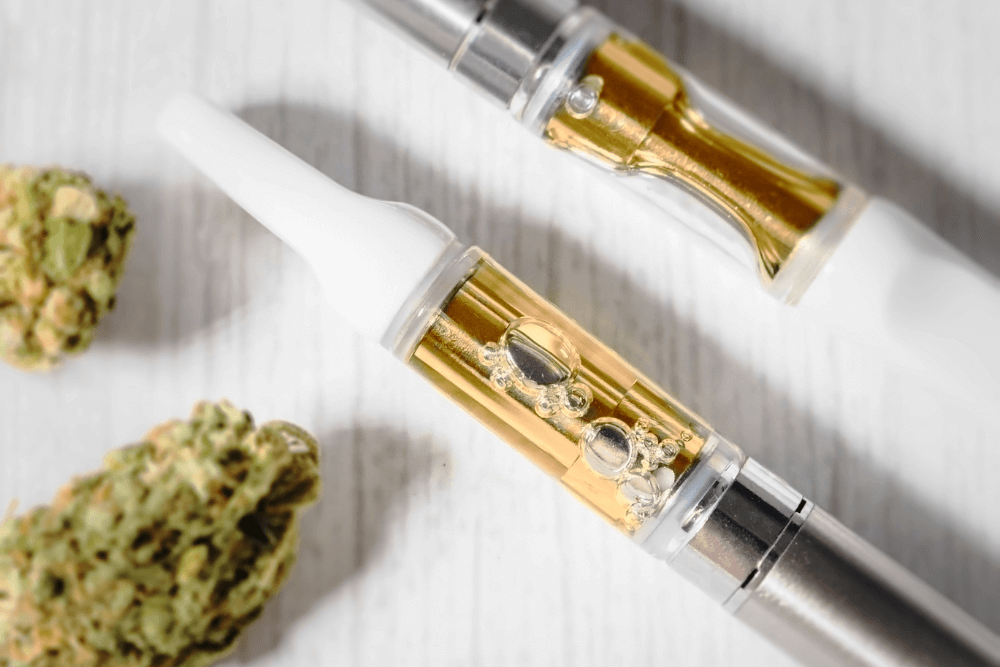
Published on behalf of NCIA’s State Regulations Committee (SRC)
As the cannabis industry continues to evolve, so do the discussions around regulations, particularly concerning flavor additives in inhalable cannabis products. This blog post represents the members of NCIA’s State Regulations Committee current reflections on the successes and shortcomings of existing cannabis vape regulations, focusing on flavor limitations, safety considerations, quality specifications, and labeling practices. While technical, this topic has a tremendous impact on cannabis brands and consumer safety.
First, for those who might question the need to add flavors to cannabis vapes, it’s essential to highlight the following points regarding why flavors are added and the benefits they bring:
Restoration
In some cases, such as with cannabis distillates, processing or manufacturing techniques can alter or remove natural cannabis flavors from vape liquids. Adding cannabis flavors back simply returns the final product back to nature’s intended taste profile, providing consumers with a comprehensive vaping experience.
Mimicking Smoking Sensation
For individuals transitioning from traditional smoking to vaping, flavors can mimic the sensations and tastes they are accustomed to, making the switch more enjoyable and satisfying.
Customizing Preferences
Consumers have diverse preferences, and adding flavors allows them to customize their vaping experience based on their personal taste preferences, whether they prefer fruity profiles or classic cannabis flavors. Akin to aromatherapy, consumers may also predict the mood impression they will experience by vaping a particular flavor.
Providing Consistency
Consumers often expect certain flavors in products based on their product familiarity so it is important for brands to be able to deliver a consistent vaping experience wherever their product is sold despite changes that the consumer may otherwise notice due to harvesting variability of the cannabis or limitations on strain availability across borders.
Meeting Market Demands
The vape industry is driven by consumer demand for a wide variety of flavors. Adding flavors allows vape manufacturers to meet market demands and cater to the preferences of different consumer segments. In regions where certain flavors are restricted or banned due to regulation, the legal vape industry is challenged to compete with the illicit market, where flavors would continue to be available. However, these illicit market alternatives may not undergo the same safety and quality standards as legal vape products, potentially posing risks to consumers’ health. By offering a wide range of flavors, the legal vape industry can provide consumers with safer alternatives and help combat the proliferation of potentially unsafe, unregulated products.
Personal taste aside, the dangers of unsafe flavors in unregulated products are real, as was demonstrated in 2019 through cases of EVALI (E-cigarette or Vaping Associated Lung Injury). As detailed in this piece, manufacturers need to follow best practices to protect vaping consumers no matter if they are in regulated cannabis, unregulated cannabis, or the CBD/hemp markets.
Flavor Limitations
Overall, the addition of flavors to cannabis vapes is not just about enhancing taste but also about meeting consumer expectations and improving consumer safety. Flavors create consistency in products and are common across consumer products we already enjoy daily. Consumers are trained to expect flavor variety and consistency in traditional e-cigarettes, and cannabis vapes should be no different.
What’s Working?
We commend states like Oregon for taking a pragmatic approach by allowing a broad range of natural, artificial, and cannabis-specific flavoring ingredients while rightly prohibiting scientifically known inhalation hazards. This approach provides broad room for innovation while protecting the public from valid safety risks.
What’s Not Working?
Conversely, restrictions on flavor ingredients to only natural sources, as seen in states like Nevada, California, and New York, are unnecessarily limiting and not scientifically justified. Further limiting flavoring terpenes to being cannabis or hemp-derived, like in Connecticut, also hinders creativity, imposes higher costs, and potentially pushes consumers towards unregulated alternatives. Likewise, enforcement actions to prevent adolescent access to vapes should be prioritized over regulations to limit flavors or labels thought to be more appealing to adolescents.
Safe Flavors
Everyone’s goal should be to provide consumers with the safest possible experience when using inhalable products containing flavors. What’s safe to eat isn’t always safe to inhale.
What’s Working?
Responsible suppliers implementing robust quality and regulatory pre-qualification measures for all flavor ingredients is a positive step. Vendors should be vetted, approved, and responsible for the products they supply. Encouraging manufacturers to develop comprehensive toxicological programs tailored for inhalation safety is also crucial.
What’s Not Working?
Requiring flavors or flavor ingredients to be listed on the pharmaceutical FDA IID for inhalation is inappropriate and does not guarantee a safer flavor. The only reason flavors or flavor ingredients may be in the FDA IID is because they already exist in pharmaceutical products that went through a safety review process. However, the flavors themselves haven’t been evaluated independently for inhalation safety (emphasis added).
Instead of mandating a specific database of flavors, it’s more appropriate to regulate the process of sourcing and validating ingredients.
Quality Specifications
Once a desirable and suitable flavor has been identified, manufacturers need to understand how to maintain quality.
What’s Working?
Adhering to the approach of FDA’s Food Safety Modernization Act (FSMA) for quality plans is best practice, ensuring hazards are identified and controlled by qualified individuals at each manufacturing stage.
What’s Not Working?
Overly broad testing requirements for non-cannabis-derived flavors or multi-ingredient cannabis products are redundant and economically unviable, particularly when hazards are effectively controlled through quality plans at earlier or later stages of a supply chain.
Labeling Practices
Finally, it’s important to examine how manufacturers should disclose when flavoring has been added to products. Consumers have a right to understand if a product is flavored.
What’s Working?
Simple, consumer-friendly labeling, such as using common terms like “Natural and Artificial Flavors,” aligns with other industry standards and will be recognized by the common consumer. Adopting labels familiar to the conventional Consumer Packaged Goods (CPG) industry effectively bridges the gap between industries and aligns with how consumers already make these decisions across all products they buy.
What’s Not Working?
Listing the chemical names of all flavoring ingredients, as mandated in Oregon, New York and Missouri, is excessive and may confuse or intimidate consumers. Consumers are not qualified to assess risk from formula information. Unregulated products that do not list flavor ingredients may become more appealing to some consumers that are intimidated by the chemical names on the flavor label of the licensed product.
Recommendations
Having reasonable and consistent regulations across the country will help to create a safe and level playing field for manufacturers and brands to compete for consumer market share. While nuanced, these regulations materially impact the ability to bring a product to market or make a product economically viable.
Starting with flexible flavor definitions allows for a wide range of internationally recognized flavor ingredients, including natural, artificial, and cannabis-inspired isolates.
Banning known risks is common sense best practice. This process must be dynamic and listen to science. For example, Diacetyl, once a popular popcorn flavoring, was banned after research concluded it was unsafe for inhalation. A known, published inhalation hazard list is critical.
Implementing a safety certification policy based on thorough toxicological risk assessments specific to inhalation exposure ensures accountability.
Finally, adopting simple and recognizable labeling terms like “Natural and Artificial Flavors” and aligning allergen disclosures with established FDA and EU regulations make sense and protect intellectual property. We are advocating for consistency.
These effective regulations prioritize safety without stifling innovation or burdening stakeholders. We welcome ongoing dialogue and collaboration to develop pragmatic, science-based regulations that benefit consumers and the industry.
Committee Blog: Harnessing the Potential of Partnership Between the Cannabis Industry and Academia
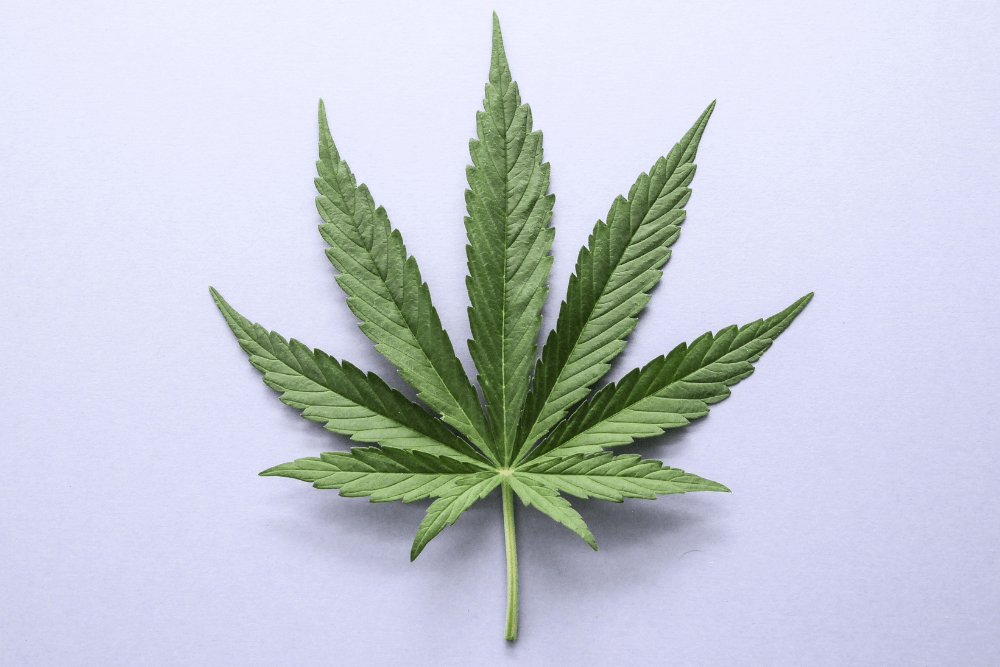
Published by NCIA’s Education Committee (EC)
Although cannabis companies are limited in the scope of their business activities awaiting much needed descheduling, it hasn’t stopped the need for educating and preparing the cannabis workforce. For some states cannabis tax dollars are appropriated to education, violence prevention and workforce development and often developed through the lens of social equity. Ohio, Colorado, Illinois, and Michigan for example, each invest in cannabis literacy in some way. Cannabis programs such as Oaksterdam University offer learners certificates or degrees for every aspect of the supply chain. Departments shape cannabis curricula with the support of faculty members and subject matter experts from both the private and nonprofit sector. These diverse educators instruct to prepare employees to fill the expected 1.5 million to 1.75 million cannabis jobs by 2025 as estimated by the Bureau of Labor Statistics.
Partnering with academia
Legacy growers and professionals from more mature markets like California and Colorado find themselves advising academic partners on the type of information most needed by the first generation of cannabis employees. Amanda Reiman, PhD MSW serves as the Chief Knowledge Officer for New Frontier Data and instructor of Implications of Legalization of Cannabis: Policy and Compliance for Excelsior University, she believes legacy knowledge, paired with academic research, will help address the gaps in knowledge created by prohibition. “For decades, academic institutions had to stay an arm’s length from cannabis due to its legality. Now, with state laws changing, it has opened up an opportunity not only for academic institutions to offer coursework to support the emerging industry, but to learn from those who have been growing and working with cannabis prior to legalization,” Reiman says.
Using the state laws as a baseline for cannabis literacy, programs structure certificates and degrees to prepare learners to understand the complexities of the cannabis industry. For cannabis businesses working with the academic sector is a way to keep the pulse on emerging local talent, remain aware of the effectiveness of educational approaches and in some instances, earn an income. Positioning your business in academic networks is best when it’s both mutually beneficial and ethical.
It is important to keep in mind that programs can lead to good-paying jobs for those who’ve suffered from the war on drugs and justice-impacted populations.
Some programs are of no cost to students, while others compensate students for their participation. Certifications and degrees however don’t ensure employment. Most importantly cannabis businesses providing subject matter expertise must also continue to learn how to have a favorable impact on student populations that require learning how to serve them best.
Teaching
When teaching cannabis student populations will vary. It is important to approach the various topics with a sensitivity to the historical injustices and disparities that have existed within the cannabis industry. Some students may have faced disproportionate barriers to entry into the industry due to systemic discrimination and lack of resources. Other students may have different experiences related to health and wellness that when discussing need to be facilitated with great diplomacy, discretion and protection of privacy.
Instructors must provide accurate and unbiased information about cannabis, but sourcing materials may be challenging. It is recommended to identify the most credible and accessible resources for courses.It is also important to acknowledge the potential for exploitation and exploitation of vulnerable communities in the cannabis industry, and to educate students on how to navigate these challenges and protect their rights.
“I came into cannabis from teaching urban ecology, urban agriculture and environmental justice concepts and I was quite familiar with learning and teaching novel concepts to diverse audiences. But what I noticed is that it was challenging for my peers. I had helped write our Illinois legislation and also had a professional cannabis network. Industry experts were invaluable for me to be successful in teaching this material and without those trusted peer mentors I doubt I would have been able to create meaningful coursework and identify high quality resources to do so,” shared Mila Marshall, PhD, NCIA Education Committee Chair.
Furthermore, it is crucial to empower social equity students to advocate for themselves and their communities within the cannabis industry. This may involve providing resources and support for networking, business development, and community engagement that are embedded in the course material and syllabi.
“Teaching is a skill above and beyond knowing the subject. For subject matter experts to be effective teachers, they should gain knowledge around differential learning styles, student engagement and effective communication,” shared Dr. Reiman. She contends that being a cannabis expert is only part of what is needed to be an effective teacher in the cannabis space. Overall, teaching cannabis with social equity students should be approached with an ethical and inclusive mindset, recognizing the unique challenges and opportunities that these students face in the industry. By promoting transparency, empowerment, and social responsibility, educators can help to foster a more equitable and just cannabis industry for all. Instructors play a key role in unlocking the potential of cannabis learners and there is a learning curve for instructors. Dr. Hemant Kumar has worked many years as a medical cannabis educator and is the Program Director of M.S. in Biotechnology and Office of Online Education and Expanded Programs at Morehouse School of Medicine. He has realized that it’s important to understand the student audiences and their level of knowledge of cannabis. He promotes remaining aware that academia is just as susceptible to the dynamic and fast paced nature of cannabis as an industry. “Scientists are globally publishing cannabis discoveries daily, shared Dr. Hemant. We see there also is a fast growing demand for business and entrepreneurial courses with potential for career pathways; manufacturing, tech start-ups, data analytics, marketing and even healthcare,” Dr.Kumar shared.
Advisory councils
Programs benefit from the strategic advice of cannabis businesses and social equity advocates. Advisory councils are often informal in nature and independent from state regulation oversight. Council members provide insight on everything from hiring of educational professionals to establishing events and bringing in additional resources to construct greenhouses or implement hands-on internships. Commitments can vary from a single semester to an entire year or more.
Academic Advisory councils provide feedback and direction for long-term goals and strategic planning. With cannabis more in the academic spotlight than ever, it is crucial we start developing programming and educational strategies to highlight cannabis career opportunities.
As cannabis is a continually evolving industry, there are opportunities for subject matter experts to collaborate with the academic community. The cannabis industry intersects with so many different aspects of the workforce that span multiple sectors and academic degrees. Yet there are often missed opportunities for securing talent from junior colleges, trade schools, and research universities.
Cannabis organizations’ presence at career fairs ideally should be used for visibility and awareness in the cannabis space. This allows future employees and the canna-curious an opportunity to view this industry as a legitimate career path with ample employment opportunities. It closes the communication and educational gaps and offers opportunities for subject matter experts to collaborate with the academic community.
Cannabis companies, like other industries, are part of our nation’s workforce. To normalize our booming industry, it’s important to spread awareness that the medical cannabis space is a thriving industry in need of graduates, interns, and talent from all walks of life, to help fill a myriad of different positions within the cannabis space.
Our industry is unique in that it encompasses so many different fields of study across such a vast range of subject matter. Educating academia is crucial to paving the way for research and the normalization of this industry. We must empower and support entrepreneurs and their communities by creating an equitable and sustainable cannabis industry. By aligning with academia, we unite with community and industry leaders to achieve cannabis normalization for our communities.
Committee Blog: Data-Driven Cultivation
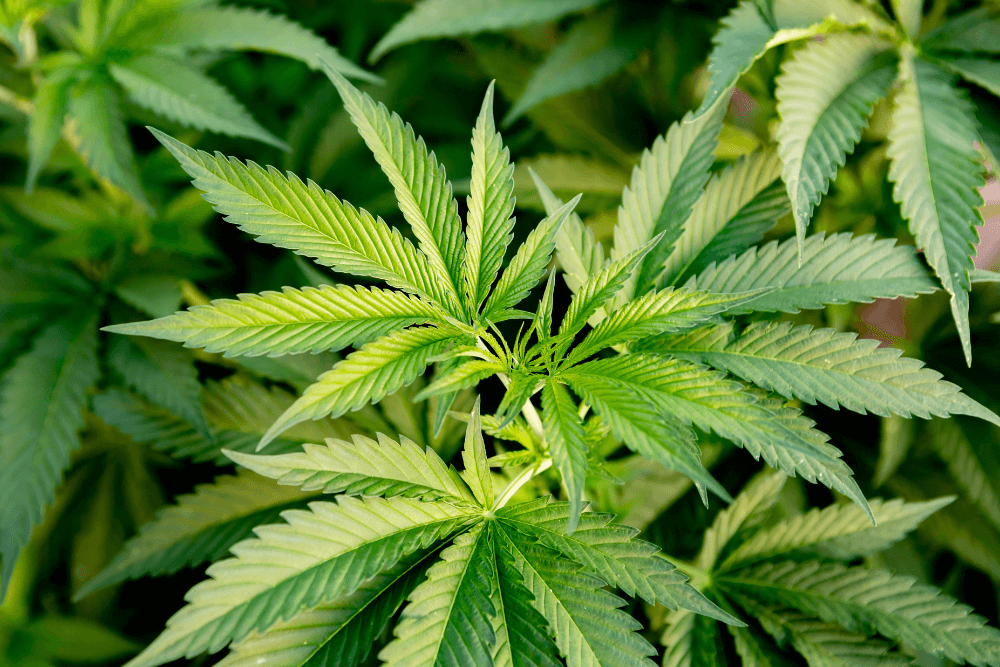
Published by Elmar Mair, PhD on behalf of NCIA’s Cannabis Cultivation Committee
In any industry, whenever we try to optimize a process, the first step is to collect data to understand the dependencies and identify bottlenecks. In cultivation, we are still lagging behind, and we accept an average process loss of 10-20%. How can we change that?
Cannabis cultivators will lead this transformation in cultivation
Cultivating and growing plants to their full potential takes experience and specialized skills. Cannabis is no different, and many would argue, can be even more difficult to grow compared to other plants; that is because cannabis is cultivated for multiple reasons. The majority of people know that cannabis is grown for recreational and medicinal use. However, cannabis is also grown for its hemp fiber to create paper, clothing, biofuel, and food. Cannabis is an extremely fast-growing plant. The plant attracts and is susceptible to many pests, including several types of insects, fungus, and bacteria. Another challenge with cannabis is the fact that it has not been grown at scale or studied to the extent of other crops. The legal cannabis industry has only been around since 2012, when Colorado and Washington were the first states to legalize recreational use. Growing cannabis is basically like driving a race car for the first time without knowing the course ahead. Good luck. Wouldn’t you want to know more about your race car, your team, and the uniqueness of the track in order to navigate with precision and skill? That’s exactly why data is such a powerful asset in cultivation, especially for cannabis cultivators.
Switch from qualitative to quantitative data
A lot of stress, miscommunication, and conflict in cultivation operations are due to the subjective nature of data collection. We rely on humans to assess a crop’s state and remember it when comparing historic results. “It looks better than last time.” or “It looks good.” – imagine if you could rely on numbers when making such statements: “We have 10% larger flowers than last cycle” or “This cultivar stretched until day 25 compared to the other cultivar which stopped stretching around day 30”. These are statements that are easy to agree on and hard to challenge since they are objective facts.
Capture a comprehensive set of data
The other important aspect to know about data is that data becomes exponentially more valuable the more complete and comprehensive it is. If you are baking bread and you only measure the flour but not the salt, water, or yeast, there is not much value to this information. The question we need to answer is what data allows us to draw a comprehensive picture of a garden. What data do you need to remotely steer a crop and guide a team on the ground? Cultivators heavily rely on the visual feedback of plants when assessing plant health. Being able to see the plants will be key but also to get a sense of plant health in numbers to allow for quantitative comparisons. Obviously, measuring environmental parameters like air temperature, relative humidity, light intensity, and CO2 is key to operating a cultivation facility. One of the most critical parameters to optimize is the Leaf Vapor Pressure Deficit or Leaf VPD. It provides information on how the plant is transpiring and, thus, how efficiently it can grow. In order to calculate the Leaf VPD, one also needs to know the leaf temperature. Substrate properties are another key piece of the cultivation puzzle. Water content, EC, and pH are important factors to navigate. Finally, it is important to know if any pests, molds, fungus, or viruses are present in the environment. And other factors are obviously key to measuring and understanding when operating a cultivation facility, like airflow, power consumption, etc. The more data you can capture the better you can consistently bake and optimize your favorite bread.
Leverage automation and AI to capture and process the data
However, when collecting data we need to keep in mind that all environmental parameters affect the same plant and, thus, they are all intertwined – in general, changing one parameter requires the adjustment of all other parameters as well. At the same time, the impact of these decisions is often only assessed by looking at the final yield, which makes it impossible to derive what influence each decision had on the respective result. Like in many other fields, modern automation and artificial intelligence are fueling the transition to data-driven decision-making in cultivation. And Cannabis, as one of the highest margin crops, is at the forefront of this evolution. Automated, intelligent systems can monitor your crop 24/7, allowing you to focus on fixing the issues rather than identifying them. They can measure properties across the full canopy, which have not been accessible before, like leaf temperature, bud count, plant stress, pests, and other crucial factors. They enable your team to assess the garden and to discuss its state remotely as well as to compare historic data across growth cycles.
Investing in data collection means making more money
The lack of data obviously results in inconsistencies and even crop loss—in cannabis, the industry average is 15% crop loss. Translation: millions of dollars lost, which goes even higher the larger the facility. That’s a significant amount of revenue that is lost instead of being deployed in other areas for expansion or optimization. In a highly competitive industry, implementing features such as data collection to minimize crop loss and optimize yield pays off quickly and can play a huge factor in a business’s long-term success.
Update from D.C.: The Latest on Marijuana Rescheduling and the Farm Bill

There were two major cannabis policy developments from Washington, D.C. last week: language of the proposed rule for rescheduling became available (accompanied by a video from the President reaffirming his commitment to reform) and the long anticipated text of the farm bill was released.
The text of the proposed rule confirmed that the Attorney General is seeking to move marijuana from Schedule I of the Controlled Substances Act (CSA) to Schedule III. Doing so would provide tax parity for the cannabis industry by ensuring legal businesses would no longer be subject to an arcane provision of the U.S. tax code — Section 280E — that prohibits deductions associated with “drug trafficking.”
The Department of Justice asked for public comment on various topics, including:
- Facts and expert opinion on different forms, formulations, and delivery methods
- Dosage and concentration information
- Data on marijuana constituents, routes of administration, and impact of Delta-9 THC potency
- Information regarding the scope, duration, and significance of marijuana abuse
- Comments on the practical consequences of rescheduling marijuana to Schedule III under the relevant statutory frameworks
- Comments on the economic impact of the proposed rule
- Information on how rescheduling may impact “small entities”
The public comment period is officially open and will conclude on July 22. NCIA will be submitting comments during the rulemaking period on behalf of the hundreds of small businesses we represent in the legal cannabis industry.
In addition to this exciting announcement, the House Agriculture Committee also released the text of the overdue 2023 farm bill (the bill’s original deadline was September 30, 2023, but was extended for one year).
Included in the bill is language regarding hemp and hemp production. The 2018 farm bill legalized hemp by authorizing the production of hemp and removing hemp and hemp seeds from the CSA. Since then, the proliferation of hemp derived products containing various cannabinoids (CBD, Delta-8, THC-A, etc) has become commonplace. The increase of intoxicating products derived from hemp has concerned many — including those in Congress.
During the Committee markup, an amendment was offered by Rep. Mary Miller (R-IL) that would federally ban all ingestible hemp products with any level of THC. The amendment passed via voice vote.
This is an area we at NCIA are keeping a close watch. As the association that represents the entire cannabinoid industry, we are urging Congress to eschew the failed policies of prohibition and to instead move to regulate hemp and marijuana-derived products equally.
Make sure you check out our brand new position paper “Navigating the Future of Cannabinoid Regulation: Balancing Safety, Innovation, and Consumer Access”, which delves into the complexities of cannabinoid production, differentiating between plant-extracted and synthesized cannabinoids. It also addresses the challenges posed by the current regulatory landscape and advocates for a common-sense federal framework that emphasizes safety, consistency, and quality across all cannabis-derived products.
Committee Blog: Unwrapping the Complexities – The Plastic Packaging Predicament

Written by: Karen Quinto, MS Environmental Science, Willow Industries
Balancing Protection, Sustainability, and Safety in the Packaging Industry
In 2012, child-resistant packaging legislation prevented access to children while the legal cannabis market began to open up but the issue persists over a decade later and the topic is still controversial to some.
“CR [Child-resistant] packaging on flower products makes no sense. On edibles sure, but flower? Not to mention that alcohol has no CR, and I’d argue is 100x more harmful to a kid who gets into it…. It feels like a piece of legislation to make regulators feel good about themselves but is a frustration to everyone else,” voiced Tyler Works on his LinkedIn page.
Works, the Director of Account Management for Cannabiz Media, is not alone on this sentiment. The delicate balance between protecting products and ensuring consumer safety is continuously challenged by concerns over its efficacy and common sense.
“When we worked on these rules, this was considered but it was more important to satisfy the minds of the people terrified of kids getting into cannabis,” chimed Gus Green, who helped states adopt the Code of Federal Regulations for the Poison Prevention Packaging Act due to cannabis being a Schedule 1 drug, therefore automatically deemed harmful to children. “Now is a better time to breach the subject. The Poison Prevention Packaging Act states that any product deemed toxic for a child under 5 years old should be in child- resistant, and senior-friendly packaging. I worked with state agencies around the country to adopt these. The rule is a bit more specific than that if you dive in though, it’s about the ability for a child to ingest a toxic amount within a specific timeframe…[For example] travel-size Listerine bottles are not always CR, but the large bottles are always CR.My specialty was child-resistant, or specialty packaging. Packaging specialists should be the ones rewriting these rules but I often see committee members with no background in the field attempting to write them.”
CFR 16 PART 1700 refers to Title 16, Part 1700 of the Code of Federal Regulations (CFR), which specifically deals with Poison Prevention Packaging. This regulation focuses on the packaging requirements for substances that are potentially hazardous or poisonous, especially to children. The key objective is to prevent accidental ingestion by children and reduce the risk of poisoning incidents.
The regulation outlines standards and specifications for packaging design and labeling to ensure that products posing a poisoning risk are packaged in a way that makes it difficult for children to open or access the contents. This includes child-resistant closures and barriers to entry. The goal is to enhance the safety of household products, medications, and other substances that could be harmful if ingested by young children. Compliance with CFR 17 PART 1700 is essential to meet safety standards and protect consumers, particularly children, from accidental poisoning. 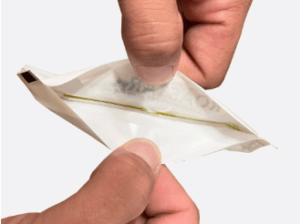
It seems straightforward enough but there are many problems inherent in adopting a rule that was not specifically made for the cannabis industry.
The Dose Makes the Poison
Works’ earlier sentiment is essentially that “the dose makes the poison”. This fundamental concept in toxicology states that any substance can be harmful in large quantities but may be safe at lower levels.
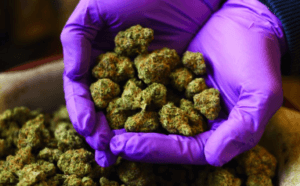
Proponents of this sentiment argue that cannabis flower contains THCA, which is a non-psychoactive cannabinoid, meaning it does not produce the “high” associated with THC and cannabis use. THCA is a precursor to THC through decarboxylation, which converts THCA to THC with the application of heat, typically when it is smoked, vaporized or cooked. Therefore, ingestion of THCA is unlikely to cause intoxication in a child. Moreover, Works argued that requiring child-resistant packaging for THC flower is inconsistent with the treatment of other potentially harmful household items that are not subject to the same level of regulation, such as bottles of alcohol that do not require child-resistant packaging despite their inherent availability and quantity in a household.
Advocates for the deregulation of child-resistant packaging of flower might suggest that just like for alcohol, home environment control would suffice in controlling cannabis as a safety measure for children. Storing THC flower in an inaccessible location followed by strong educational measures urging parents to responsibly store and prohibit access could be effective in preventing accidental ingestion.
While these points are presented for the sake of argument, it’s important to reiterate that child-resistant packaging regulations are designed to prioritize child safety. The potential risks associated with accidental ingestion of THC or other substances are serious, and any discussion around exemptions should carefully consider the well-being of children. Public health and safety regulations are typically enacted with the aim of preventing harm and protecting vulnerable populations. But this is not the only issue people have in mind regarding packaging.
Child-resistant packaging for flower not only seems problematic because it is incongruent with regulations for other harmful household substances including alcohol but also because it creates trash. A lot of it.
The Single-Use Abuse
The Sustainable Cannabis Coalition estimated that in 2020, the US Cannabis Industry used almost one billion pieces of single-use plastic that mostly ended up in landfills. Research and testing activities–including those for the cannabis industry–adds up to over 12 billion pounds per year. The majority of these plastics cannot be recycled due to their diverse material composition. A whopping 40% of total emissions are attributed to our procured goods and services. 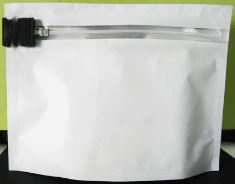
Packaging materials, particularly plastics, are composed of various substrates such as polyethylene, each with distinct properties. Sustainability concerns arise as certain laminated plastics prove difficult to recycle. Challenges persist, especially in the context of single-dose packaging and restrictions on child-resistant reclosable plastics.
“People want to recycle bioplastics but they don’t have good barrier properties,” Gus Green states. “There is also a problem with the idea of biodegradables because they are designed to break down. Biodegradable plastic is not allowed in child-resistant reclosable plastics because the mechanism will fail because the material is frail, but laminated plastics that have great barrier properties cannot be recycled.”
The Sustainable Cannabis Coalition blog announced that in 2021, CULTA, a cannabis company, partnered with The High 5 Initiative, a non-profit company that’s working to keep Polypropylene #5 plastics out of landfills through recycling. Patients can return packaging to CULTA, where the initiative team sorts and processes the materials, recycling over 95% and transforming #5 plastics into Post Consumer Resin (PCR) for manufacturing other products.
Despite the environmental benefits, transitioning to eco-friendly packaging faces challenges, including cost implications. For instance, CULTA notes that switching to eco-friendly cellulose packaging would increase costs, making it economically challenging for cannabis companies, coupled with perceived quality issues with thinner and more pliable cellulose bags (which may seem cheaper, thus impacting consumer acceptance).
The Future of Plastic Waste in Cannabis
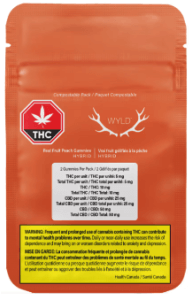
New metalized child-resistant compostable cellulose film bags have entered the market for the first time and offer the opportunity for both home and industrial composting, including the cannabis industry.
“In Canada, Wyld has adopted child-resistant compostable pouches. Many edibles brands are moving to an inner-outer pack combo with individually-wrapped pieces inside a mother bag, similar to many traditional candies. Think caramels, Starburst, cough drops, Hershey’s Kisses, Reese’s cups, etc. – cannabis consumers want fresh products, and individual wraps accomplish that. To avoid more single-use plastics, NatureFlex is seeing significant, promising interest,” Elisha Hedin, a regional sales manager from Futamura, manufacturer of NatureFlex explained. “Compostable films can actually have a very good barrier and NatureFlex is an ideal packaging material for both gummies and flower. There’s a perception in the industry that compostable materials are low quality and that’s simply not true.”
Wyld, a Climate Neutral Certified brand, offers the cellulose-based packaging made from cellulose film laminated to a biosealant for their gummies. In home composting, this metalized compostable film degrades completely in 12-16 weeks. In industrial settings, it takes twice as fast to convert the cellulose into water, CO2, biomass, and mineral salts in just 6-8 weeks.
Meanwhile, in the research industry, Polycarbin has touted itself as the world’s only circular economy for single-use lab plastics. This California-based company helps labs achieve their sustainability goals by diverting these valuable materials from landfills and incinerators into the next generation of low-carbon lab products.
“Much like with food-tech and biotech, the cannabis industry is driven by a growing dependence on single-use plastics. From the harvest fields to the QC and QA laboratories, it is more important than ever that this industry consider the carbon footprint associated with its supply chain,” James O’Brien, CEO of Polycarbin emphasized. “Through responsible waste stream management and sustainable procurement, the cannabis laboratories can significantly attenuate the environmental impact of a major source of its scope three emissions—fossil fuel-derived, single-use plastics.”
As the packaging and research industry grapples with the complex interplay of material properties, sustainability challenges, and stringent safety standards, a delicate balance must be struck. Navigating the evolving landscape requires continuous innovation, collaboration, and adherence to regulations, ensuring that the packaging not only safeguards products but also contributes to a sustainable and secure future.
Committee Blog: A Guide to Navigating Cultivation Environmental Requirements

Navigating environmental requirements and reviews can be one of the most challenging and costly aspects of obtaining a cannabis cultivation license. Environmental standards and regulatory requirements differ from state to state and within local jurisdictions. While regulations may vary, cannabis operators encounter similar environmental requirements nationwide. Environmental reviews and impact assessments require an evaluation of cultivation policies and operations for sediment and erosion control, water usage, wastewater discharge, energy efficiency and carbon footprint, air quality, and odor control. This guide will aid operators in establishing the best practices for these environmental concerns to create a smoother environmental review process for the cultivator.
Sediment and Erosion Control
Sediment and erosion control methods are required for outdoor cultivation to ensure the facility has a comprehensive mitigation plan to prevent adverse effects the outdoor crop may cause to the land. Sediment controls are structural measures intended to complement and enhance the implemented erosion control practices and reduce any sediment discharge. Erosion control is a soil stabilization process consisting of mitigating measures to prevent soil particles from detaching and moving into stormwater runoff. Ensuring this compliance may include implementing Best Management Practices (BMPs) for Sediment and erosion control. These BMPs should be implemented before the onset of the rainy season, typically in October. Sediment and erosion control devices and measures should be replaced when they deteriorate.
Sediment Control BMPs
- Silt fences
- Fiber rolls
- Hydroseeding
- Sediment Trap
- Inspect the trap on a routine schedule for litter and debris
- Remove the sediment built up in the trap and sprinkle it lightly over vegetated areas to increase soil fertility
- Gravel bag berms
- Sandbag barriers
- Straw bale barriers
- Observation station on the property for visual monitoring of sediment pollution
- Add gravel to dirt roads
- Add stormwater detention basins
Erosion Control BMPs
- Vegetative Swales & Buffers
- Swales should be trimmed to prevent restriction of flow
- Routinely monitor for any debris and overflow
- Buffers should be added to the edges of parking lots and storage areas
- Placement of straw mulch over disturbed land
- Soil binders
- Vegetation preservation
- Vegetation replacement for any disturbed areas that will not be in use
- Seed mixes containing native grass and wildflowers
- Hydroseeding
- Earth dikes
Waste Usage and Wastewater Discharge
Water usage and wastewater discharge management plans are required to ensure the cultivation facility legally and efficiently obtains its water and that no hazardous water is dumped onto the land surface, directly into the ground, or into another body of water where it could negatively impact the environment. Water usage may require obtaining documentation demonstrating you own the water rights to your facility or property. Cultivations connected to their municipalities’ water district may only need to report that information to meet this requirement. Such a facility may also need to contact its water provider to create a water rights letter showing the operator has the right to use that water. Cultivations that use other water supply methods, like wells, may need to provide a detailed report of their water quality and have well flow testing performed. Depending upon your state, you may also need to show how your water will be conserved. A cultivator may be required to create a water conservation plan detailing the procedures implemented at the cultivation site to conserve water. Wastewater discharging typically will require a cultivation site to apply for a Wastewater Discharge permit. Wastewater discharging plans that thoroughly explain how the cultivation will discharge any hazardous wastewater and what mitigating practices will be implemented to prevent wastewater from entering the environment untreated are also frequent requirements for this process.
Water Conservation Methods
- Recycling irrigation systems
- Automated irrigation systems
- Precision emitters
- Watering more frequently throughout the day in smaller amounts
- Planting pots
- Divert the dehumidifying and cooling system’s piping into a holding tank to reuse the water for irrigation
- Use organic mulch around each plant to prevent moisture loss
- Rainwater harvesting, if allowed in your area
- Substrate sensors to monitor water saturation
Wastewater Discharge Measures
- Using planting pots to prevent excess runoff
- Vegetative swales and buffers to capture wastewater
- Recycling irrigation systems with reverse osmosis and ultrafiltration or thermal evaporation
- Recycling systems that don’t have a filtration system can hold any hazardous wastewater in a holding tank and have it transported to an approved wastewater treatment facility
- Substrate sensors for the prevention of excess runoff
- Stormwater runoff prevention
- Store pesticides, chemicals, and fertilizers indoors and away from any outdoor growing areas and in approved containers
- Covering wastebins
- Divert stormwater away from any stockpiled materials
Energy Efficiency and Carbon Footprint
Cultivation energy efficiency and carbon footprint reporting are becoming more popular among regulators as the country moves toward environmentally friendly practices. Energy efficiency may require the cultivation site to comply with specific requirements for equipment and lighting. Many licensing bodies also require an energy efficiency plan that details what mitigating measures the operator will implement to reduce energy costs. Carbon footprint reporting may require greenhouse gas emission (GHG) reporting, which can require a cultivator to purchase carbon offsets. Green energy plans are sometimes required; these plans demonstrate how the cultivation will utilize green energy options to reduce their carbon footprint.
Energy Efficiency
- LED lighting
- Automated irrigation systems
- Automated blackout curtains for greenhouses
- On-site composting
- Low-flow fixtures
- Split ductless air condition
- Chilled water systems for dehumidification
- Modulating hot gas reheat forced air systems
- Sensor motion lighting in rooms that aren’t frequently entered
- Adjust lighting schedules based on the weather if using mixed-light
- Installing solar panels
- Request an energy efficiency review from your utility provider
Carbon Footprint
- Sign up with a clean energy provider that partners with your utility company and reinvests the funds from the program into clean energy initiatives in your state
- Avoid generation use wherever possible
- Install renewable energy sources at your facility, like solar panels
- Replace pesticides with biocontrols using predatory insects
- Use recycled or biodegradable packaging, even for wholesale flower
- Cultivate companion plants that deter pests and attract beneficial insects
- Reduce or eliminate lighting requirements by establishing a greenhouse or outdoor cultivation facility
Air Quality and Odor Control
Air quality reviews may be triggered for cultivation facilities, including the requirement to obtain an air permit. Air permits allow an operator to release a limited amount of pollution within certain restrictions. Air quality reviews for cultivations are triggered by several factors based on the state requirements, some of which may include drying, processing, generator use, fugitive emissions, and pesticide application. If a cultivator is required to obtain an air permit, they will be licensed to perform those activities. Cultivations going through air quality reviews may need to provide an Air Quality Control Plan outlining the mitigation efforts the cultivator will make for air quality pollution. Odor Control Plans are one of the most common regulatory requirements for cannabis businesses. If your environmental review includes odor control and you operate an outdoor cultivation site, you may be required to conduct an odor control study on your facility. These studies use wind patterns to measure the distance the odor from your cultivation will travel. Based on your state or local jurisdiction’s requirements, an odor control study may require you to move the border of your canopy. Conversely, an odor control study may prove that your cultivation will not be a nuisance due to odor pollution, and no mitigating measures will be required. Odor control plans should detail precisely what mitigating measures the cultivator will implement and, if available, data on how effective those measures will be.
Air Quality Control Plans
- Wetting the surface of dirt roads during the dry season
- Encourage ride-share amongst your employees
- Reduce VOCs wherever possible
- This can include timing harvesting to reduce ozone impact
- Include a chemical usage plan that describes how pesticides, fertilizers, and other agents will be stored and disposed of in alliance with the manufacturer’s recommendations
- Detail how you will maintain Safety Data Sheets (SDS) on all chemicals at the facility
Odor Control Plans
- Indoor cultivations and greenhouses can implement the following measures:
- Use carbon filters
- Explain in your plan how carbon filters work, provide data on their filtration rates, which you can locate in the manufacturer’s guide, and how often you will replace them
- Use wet scrubbers for indoor cultivation or greenhouses
- Explain how the air is treated when it passes through the scrubber
- Implement biofiltration measures
- Explain how the air will pass through soil, mulch, or other organic matter to filter the air
- Use oxidization treatments through your facility’s ventilation system
- Explain how the process of oxidization removes odor
- Have open communication with your neighbors regarding odor
- Explain how you will speak with your surrounding neighbors about any odor concerns and request your neighbors contact you if they do smell odor so you can begin an assessment into structural or equipment failures and, if needed, implement further mitigating measures to your plan
- Outdoor cultivations can implement the following methods:
- Hire a professional to do an odor study to prove your facility’s compliance
- Plant fragrant flowers around the exterior of the site
- Use oxidization treatments through high-pressure misting devices around your cultivation area
- Explain how the process of oxidization removes odor
- All cultivation types should have open communication with surrounding neighbors regarding odor
- Explain how you will speak with your surrounding neighbors about any odor concerns and request your neighbors contact you if they do smell odor so you can begin an assessment into structural or equipment failures and, if needed, implement further mitigating measures to your plan
As regulatory requirements vary across the country, cultivators should carefully read their regulations and contact state and local departments for guidance on requirements specific to their operations. A thorough understanding of what plans must be created, studies performed, and special permits obtained will create a smooth environmental review process. Join the upcoming NCIA webinar from the Cannabis Cultivation Committee to dive deep with industry professionals on navigating environmental reviews across the United States.
Committee Blog: Discovering the Potency of Data – How Cannabis Brands Can Harness Audience Insights to Elevate Success

In the rapidly evolving landscape of the cannabis industry, understanding your audience is critical to staying ahead of the curve. For brands, this can be difficult given retailers hold the keys to their customer data. However, through the utilization of digital marketing, cannabis brands have the opportunity to glean invaluable insights from their audience data. In this comprehensive breakdown, we’ll explore how cannabis brands can leverage audience data from programmatic advertising, email campaigns, SEO and more to gain a deeper understanding of their customers and enhance their overall success.
The Power of Data in the Cannabis Industry
Data is the cornerstone of informed decision-making, and in the cannabis industry, with its regulatory restrictions and shifting consumer preferences, its importance cannot be overstated. By harnessing audience data from digital marketing campaigns, cannabis brands can move beyond conjecture and gain actionable insights into their customers’ behaviors, preferences, and needs.
Analyzing Audience Demographics
One of the primary benefits of digital marketing is the ability to gather detailed demographic information about your audience. Through tools like Google Analytics, social media insights, campaign reports, and customer relationship management (CRM) platforms, cannabis brands can paint a vivid picture of their customer base. From age and gender to location and interests, this demographic data provides invaluable insights into who your customers are and how best to engage with them.
Understanding Consumer Behavior
Beyond demographic data, digital marketing campaigns offer a window into consumer behavior. By tracking website traffic, engagement metrics, and conversion rates, cannabis brands can gain a deeper understanding of how customers interact with their brand online. This insight allows brands to identify trends, uncover pain points, and optimize their digital presence to better meet the needs of their audience.
Personalizing the Customer Experience
One of the most powerful applications of audience data is in personalizing the customer experience. By segmenting their audience based on demographic information, cannabis brands can tailor their messaging and offerings to resonate with individual customers. Whether through targeted email campaigns, customized product recommendations, or educational content, this level of personalization not only enhances the customer experience but also drives engagement and loyalty.
Optimizing Marketing Strategies
Audience data also serves as a compass for guiding marketing strategies in the cannabis industry. By analyzing the performance of various marketing channels, content types, and messaging approaches, brands can identify what resonates most with their audience and allocate resources accordingly. Whether it’s investing more heavily in content creation, refining digital advertising tactics, or experimenting with email campaigns, data-driven insights enable brands to optimize their marketing efforts for maximum impact.
Predicting Trends and Forecasting Demand
In addition to informing day-to-day marketing decisions, audience data can also provide valuable insights into larger industry trends and consumer preferences. By analyzing macro-level data trends across their customer base, cannabis brands can identify emerging market opportunities, anticipate shifts in demand, and stay ahead of the curve. Whether it’s launching new product lines, expanding into new geographic areas, or pivoting to meet evolving consumer needs, data-driven forecasting empowers brands to make informed strategic decisions.
Enhancing Product Development
Finally, audience data can play a pivotal role in shaping product development strategies within the cannabis industry. By soliciting feedback from customers through surveys, reviews, and social media interactions, brands can gain valuable insights into product satisfaction, preferences, and needs. This feedback loop not only informs the development of new products but also enables brands to refine existing offerings based on real-time customer input, ensuring that their products remain relevant and competitive in a rapidly evolving market.
Conclusion
In conclusion, audience data is a potent asset for cannabis brands seeking to unlock the full potential of their marketing efforts. By analyzing demographic information, understanding consumer behavior, personalizing the customer experience, optimizing marketing strategies, predicting trends, and enhancing product development, brands can gain a deeper understanding of their customers and elevate their overall success in the cannabis industry. As digital marketing opportunities continue to evolve, brands that harness the power of data will undoubtedly emerge as leaders in this dynamic and rapidly growing market.
Member Blog: Colorado’s Evolving Cannabis Testing Regulations


Among the first two states to legalize and the first market to open, Colorado has had adult-use cannabis regulations in place for more than a decade now and helped set a standard for all the programs that came after it.
But Colorado’s testing regiment, like the industry, is ever evolving, with the state testing for additional pesticides beginning this year, for example. In addition, the state’s new “reduced testing allowance” could make the whole process easier for manufacturers in good standing.
Like many states, Colorado requires testing of the final product, be it flower, edible or pre-roll, which means not only must your flower be clean, but everything else you put into your products as well. In the case of pre-rolls, that means the paper used in the pre-rolled cones, as well as the filter tip.
All products must be screened by a state-licensed and accredited laboratory for the following:
- Moisture Content and water activity;
- Residual solvents and processing chemicals;
- Residual pesticides;
- Microbial impurities;
- Mycotoxins;
- Foreign materials;
- The “big four” heavy metals (arsenic, cadmium, lead and mercury); and
- Cannabinoid potency.
WATER ACTIVITY
Like every state, Colorado testing requires laboratories check for water activity because high amounts of moisture can create an environment with the potential for mold growth.
Any water activity above 0.70 Aw creates the conditions for mold to grow, which can be harmful if consumed, which is why Colorado caps water activity at 0.65 Aw in flower and pre-rolls.
PESTICIDES AND SOLVENTS
Colorado also requires testing for residual pesticides and other chemicals and has been slowly ramping up its required pesticide testing.
For example, on January 1, 2023, the state tested for a total of 13 different pesticides. By July 1, 2023, that number had increased to 28. But new regulations going into effect this year drastically increase that number.
Beginning July 1, 2024, state law requires labs to test cannabis products, including completed pre-rolls, for 99 different pesticides, each with their own actionable limits that can cause a whole batch to be destroyed.
Additionally, the state requires cannabis concentrate products, including those used in infused pre-rolls that combine flower with a concentrate for increased potency and flavor, to be tested for residual solvents.
The state requires testing and provides actionable limits for 13 specific solvents that can be used to make extracts and concentrates, as well as requiring “none detected” for “any other solvent not permitted for use.”
HEAVY METALS
The Centennial State also requires testing for the heavy metals mercury, cadmium, lead and arsenic. All four metals are toxic to humans, even at small doses, and can damage all the body’s vital systems, including pulmonary, reproductive and even the central nervous system.
Testing for heavy metals is especially important because cannabis plants are a well-known bio-accumulator that absorbs and collects heavy metals from the soil in which it grows.
For all inhalable products, including pre-rolls, the state sets the pass/fail actionable level at 1.5 parts per million (PPM) for mercury and arsenic, 0.5 PPM for cadmium and 1 PPM for lead.
MICROBIALS AND MYCOTOXINS
But while heavy metals are dangerous, they do not pose the greatest risk to human health among the testing. That distinction is reserved for microbials and mycotoxins.
Among the microbes – bacteria and fungus – for which Colorado requires testing are salmonella, Staphylococcus aureus and e coli. There is also a total yeast and mold limit.
Mycotoxins are a toxic compound produced by molds, such as Aspergillus, and can suppress the immune system and cause liver damage. Testing for mycotoxins help ensure cannabis products are safe for human consumption.
Colorado requires testing for two classes of mycotoxins, Aflatoxins and Ochratoxin A, each with an actionable limit of 20 PPM. Both have properties that can alter DNA and potentially cause the formation of cancer cells.
PRE-ROLL TESTING
But it’s not just the flower that needs to be tested in Colorado. Products must be tested in their final form, which means that pre-rolls, for example, must be tested after they have been packed, so the paper has to be as clean as the flower. And with no regulations or requirements on the testing of rolling papers themselves, several manufacturers have run afoul of the rules because of untested rolling papers or wraps. And testing by SC Labs, one of California’s licensed testing labs, found that 11% of rolling papers tested during a recent study would fail testing. So even if you are packing your own pre-rolls, it’s important to make sure the paper you choose is tested and clean.
Colorado has also had issues with this in the past, particularly in palm leaf wraps and blunts. In 2022, the states Marijuana Enforcement Division issued a recall for King Palm products due to unsafe mold and yeast levels found in the products.
“Take due diligence to make sure your product is viable,” says Custom Cones USA Compliance Manager André Bayard, noting that manufacturers should work with suppliers that are working to set industry standards. “Any one issue can be detrimental to your brand reputation.”
REDUCED TESTING ALLOWANCE
Recognizing the unique challenges and cost of testing, Colorado has introduced new reduced testing allowances, including one tailored for pre-roll cannabis products. This allowance enables cannabis manufacturers to submit composite samples for testing, rather than subjecting each individual batch of pre-rolls to separate testing.
For example, a manufacturer may achieve a Reduced Testing Allowance for contaminant testing for a specific product, like pre-rolls, if every production batch that it produced during at least a four- to eight-week period passed all contaminant tests. However, if those pre rolls are produced using different input materials, such as a different cannabis category (e.g. flower or trim), different wrapper materials, different processes or different equipment, they must get a separate Reduced Testing Allowance.
Additionally, effective July 1, 2024, to achieve or maintain a Reduced Testing Allowance for microbial contaminants, a cultivation facility must have a Hazard Analysis and Critical Control Point (HACCP) System in place. An HACCP must contain elements defined in ASTM D8250-19: “Standard Practice for Applying a Hazard Analysis Critical Control Points (HACCP) System for Cannabis Consumable Products” that addresses each product type for which a microbial contaminant Reduced Testing Allowance is sought.
It’s important to highlight that not all cannabis products qualify for this reduced testing allowance, and pre-roll manufacturers must meet specific criteria to be eligible for this exemption. For example, to get a reduced testing allowance for microbial testing, a company must maintain cleaning records and maintenance records.
Reduced testing allowances are valid for one year.
It’s a complicated program to be a part of, but well worth it for manufacturers who have their procedures locked in, as well as a supplier that also tests their pre-rolled cones and tubes to the highest standards to ensure passage of these important tests.
FINAL THOUGHTS
Colorado’s pre-roll cannabis testing regulations play a vital role in safeguarding public health and ensuring consumer confidence in the state’s legal cannabis industry. And from a business standpoint, a testing failure can be costly, especially for smaller businesses, and can follow a company and its products even after the issue is corrected.
Make sure your suppliers take the same care as you do to ensure passage of all required tests. And always ask for COAs.
Member Blog: Creating Cohesive Cannabis Teams – How AI-Driven Hiring Promotes Diversity and Innovation

Creating cohesive teams in the rapidly growing cannabis industry involves overcoming unique recruitment and hiring challenges, including evolving regulatory landscapes and societal misconceptions. The shift from traditional recruitment methods to innovative, AI-driven approaches marks a fundamental transformation in how companies identify, evaluate, and onboard talent, promising a more efficient, equitable, and effective hiring process.
Traditionally, the cannabis industry, like many others, relied on posting job openings on industry-specific job boards, sifting through resumes, conducting face-to-face interviews, and relying on gut instincts. These methods, while having their merits, come with significant limitations, especially in an industry as specialized and fast-paced as cannabis. The reliance on subjective assessments and the potential for bias, along with the inefficiency and high risk of overlooking culturally fit candidates, highlight the need for a new approach.
The adoption of AI-driven recruitment strategies represents a significant leap forward. Platforms leveraging advanced technologies can streamline the hiring process and enhance the quality of matches between employers and candidates. For instance, AI platforms such as jobworX ai, can analyze vast amounts of data quickly and accurately, evaluating candidates across various workplace personality factors, and providing employers with actionable insights into candidate capabilities, personality traits, and potential cultural fit. These insights are crucial for aligning recruitment choices with organizational goals and the unique demands of roles within the cannabis industry. For instance, predictive analytics can forecast a candidate’s success in a particular role, while natural language processing (NLP) and machine learning (ML) enhance the efficiency of sifting through applications, identifying top talent based on predefined criteria This comprehensive approach allows for a more nuanced understanding of each candidate’s potential fit within a given role and organizational culture, addressing the unique challenges of the cannabis sector.
AI-driven recruitment strategies reduce reliance on subjective judgments, mitigate the risk of bias, and expedite the selection process. By focusing on personality traits and cultural fit alongside technical qualifications, these platforms enhance job satisfaction and retention rates. This holistic approach is invaluable in the cannabis industry, where adaptability and alignment with the company’s mission are crucial.
Moreover, AI tools facilitate a deeper understanding of market trends and candidate expectations, allowing cannabis companies to adapt their hiring strategies in real-time. This adaptability is essential in a sector where regulatory landscapes and consumer preferences constantly shift. By harnessing the power of AI, cannabis employers can navigate these complexities with confidence, ensuring their teams are not only compliant but also diverse, innovative, and aligned with the company’s mission and values. In essence, AI transforms data into strategic decision-making power, setting the stage for sustainable growth and competitive advantage in the cannabis industry.
Navigating regulatory frameworks and societal misconceptions is a significant challenge in the cannabis industry. AI tools can help businesses make hiring decisions that are compliant, fair, and unbiased. By automating and streamlining the vetting process, AI ensures that all applicants are evaluated against the same legal standards, reducing the risk of non-compliance.
Looking toward the future, several key predictions and trends emerge, highlighting how AI technologies will continue to revolutionize hiring in the cannabis industry. Predictive candidate matching, an enhanced focus on cultural and personality fit, streamlined and efficient hiring processes, increased accessibility and equity in hiring, and data-driven insights for continuous improvement are all trends shaped by AI integration. These advancements promise to reshape the landscape of recruitment and talent acquisition, making the process more efficient, equitable, and effective.
Building cohesive teams and maintaining a strong organizational culture is crucial for success. AI-driven recruitment tools, such as jobworX.ai, are revolutionizing the way companies approach this challenge by focusing on matching candidates with roles that align with their personalities and values. Kristina Etter, a freelance writer and journalist based in Colorado, highlighted in her article, Cannabis Hiring 2.0: jobworX ai’s Game-Changing New Approach, the innovative approach to recruitment within the cannabis industry via jobworX.ai, employing a Personality Assessment tool to match job seekers’ personality traits with the specific needs of cannabis roles. This method boosts job fit, worker satisfaction, and organizational synergy. It highlights the transformative role of AI in modernizing hiring practices by leveraging AI and personality assessments to ensure that candidates are not only technically skilled but also culturally and personally compatible, marking a significant advancement towards more streamlined and harmonious recruitment processes in the cannabis sector.
By leveraging advanced AI algorithms and comprehensive personality assessments, these platforms provide a data-driven approach to identifying candidates who not only possess the necessary skills but also fit seamlessly into the company’s culture. This emphasis on cultural fit is particularly important in the cannabis industry, where passion, innovation, and adaptability are key drivers of success.
AI-driven tools analyze candidates’ workplace personality traits, such as teamwork, leadership, and interpersonal dynamics, to determine their potential for contributing to a positive and collaborative work environment. By prioritizing these factors alongside technical qualifications, companies can build harmonious teams that foster a sense of shared purpose and drive organizational growth.
Moreover, by streamlining the recruitment process and reducing the risk of bias, AI-driven platforms help create a more diverse and inclusive workplace. This diversity of thought and experience is essential for driving innovation and navigating the unique challenges of the cannabis industry.
In conclusion, the integration of AI-driven hiring strategies within the cannabis industry marks a pivotal evolution in how companies approach talent recruitment and onboarding. By moving beyond traditional recruitment methods and embracing AI’s capabilities, the industry is set to revolutionize the way it builds teams, fostering environments that are not only more cohesive but also rich in diversity and innovation.
AI-driven tools offer a more nuanced and comprehensive evaluation of candidates, analyzing a wide range of workplace personality traits to ensure potential hires will contribute positively to a collaborative and innovative work environment. This focus on creating teams that share a sense of purpose is essential for driving organizational growth and maintaining a strong organizational culture amidst the rapid changes and regulatory complexities of the cannabis industry.
The advancements in AI-driven recruitment, including predictive candidate matching, a focus on cultural and personality fit, streamlined hiring processes, and data-driven insights, are set to make the hiring process more efficient, equitable, and effective. As the cannabis industry continues to grow and evolve, integrating AI into hiring practices will be instrumental in building adaptable, innovative teams capable of overcoming the sector’s challenges and seizing its opportunities.
In essence, the future of hiring in the cannabis industry, shaped by AI integration, is bright. It offers the promise of a more strategic, data-informed approach to recruitment that aligns with organizational goals, fosters diversity and innovation, and sets the stage for sustainable growth and competitive advantage. As companies navigate the complexities of the cannabis market, AI-driven hiring strategies will undoubtedly become a cornerstone of successful talent acquisition and management, ensuring that the industry remains at the forefront of change and innovation.
Member Blog: How to Build a Sustainable Cannabis Packaging Solution

According to NielsenIQ, 92% of consumers say sustainability is important when choosing a brand today. Packaging can play a significant role in helping brands meet their sustainability goals and attract eco-conscious consumers. Designing and manufacturing sustainable packaging requires a holistic approach that includes understanding the actual container, the manufacturing process, transportation and energy requirements, carbon footprint, and government regulations. When it comes to the cannabis industry, packaging solutions must also meet requirements around child resistance, tamper-evidence, opacity, resealability, label design, and more. Despite the complexities, sustainable cannabis packaging can be compliant, functional, and beautiful. Cannabis brands have many eco-friendly pathways to consider.
Compostable
Compostable packaging refers to packaging that will decompose into nutrient-rich organic matter, CO2, and water in a controlled environment in the home or commercial composting facility. According to the U.S. Composting Council, compost diverts waste from ending up in landfills, conserves water, improves soil health, promotes plant growth, and combats climate change. Because of their organic composition, cannabis products are an emerging application for compostable packaging made from hemp and other plant-based materials. Compostable products must meet strict testing requirements for decomposition, such as specific environment, specific time frame, environmental toxicity, etc. Compostable should not be confused with biodegradable packaging, which has no such requirements and may contribute to greenwashing. Compostable packaging solutions are available for cannabis products, including pre-rolls, flower, and edibles.

Recycled Materials
Beyond using recyclable packaging, today’s brands are increasingly using recycled materials like post-consumer recycled (PCR) plastics, ocean-bound plastics, and recycled paperboard to demonstrate a commitment to the environment. Post-consumer recycled content in packaging contributes to a circular economy by extending material life cycles. According to the US Plastic Pact, it reduces landfill waste, conserves natural resources, saves energy, and lowers greenhouse gas emissions. Adding PCR content to packaging decreases its carbon footprint (reduced energy use, greenhouse gas emissions, extraction of finite natural resources, and landfill disposal) compared to using 100% virgin materials, helping brands meet their sustainability goals. In addition to consumer demand, government regulations are also driving the use of PCR materials. New York introduced requirements for PCR plastic use in cannabis packaging. The Marijuana Regulation & Taxation Act (MRTA) states, “cannabis product packaging cannot be made of any plastic, unless that plastic contains a minimum 25% post-consumer recycled content.”
Reusability
Reusable shopping bags, refillable water bottles, and metal drinking straws are just a few reuse initiatives people have worked into their everyday routines over the past several years. Reusability reduces single-use packaging waste and promotes a circular economy. Consumer packaged goods brand owners – including those in the cannabis industry – are beginning to capitalize on the growing refill and reuse mentality by introducing reusable packaging. Reusable cannabis packaging can be refilled with more cannabis or used for other purposes. Material selection is essential to ensure reusability is practical and sustainable. Glass containers and high-quality, durable plastics are long-lasting and well-suited for reuse. Food-safe packaging solutions provide added functionality and additional usage occasions. Dockside Cannabis dispensaries feature seven ways to repurpose old cannabis containers.

Paper, Inks & Labeling
Secondary packaging, label components, and decoration can also play a role in a brand’s sustainability story. Using Forestry Stewardship Council (FSC) certified paper for shipping cases, secondary cartons, and inserts helps protect healthy, resilient forests. Several cannabis brands use FSC paper for their rolling papers. Inks may not be top of mind when considering eco-friendly packaging, but even seemingly minor details can have a significant impact. Inks, dyes, and coatings can inhibit recyclability and/or reusability, so using soy-based, water-based, or vegetable-based inks contributes to the lifecycle of a package. Soulshine Cannabis uses paper sourced from sustainable PNW forests and prints with vegetable-based inks as part of its commitment to be an environmentally conscious cannabis company.
Shipping Efficiencies
For a packaging solution to be truly sustainable, it needs to perform at every stage of its journey, from the warehouse to the consumer. Shipping is a big part of a package’s journey and an important part of its carbon footprint. According to the EPA, greenhouse gas (GHG) emissions from transportation account for about 29% of total U.S. greenhouse gas emissions. When it comes to transportation – and cannabis – size matters. Sizing is an essential factor when selecting the proper cannabis packaging, as it can impact the quality of the product. However, right-sizing your package to ensure it’s not larger than it needs to be can reduce the environmental impacts of shipping. Light-weighting – reducing the weight of your package by rethinking the size, material, or unneeded components – can also make a difference. Efficient packaging can reduce fuel consumption and emissions associated with shipping.
When it comes to sustainable cannabis packaging, there is no one-size-fits-all solution. Brands should consider a variety of tactics including material, size, weight, decoration, and more to find the most effective and impactful package for their product.
Committee Blog: The Importance of Insurance and Risk Management for Early State Applicants
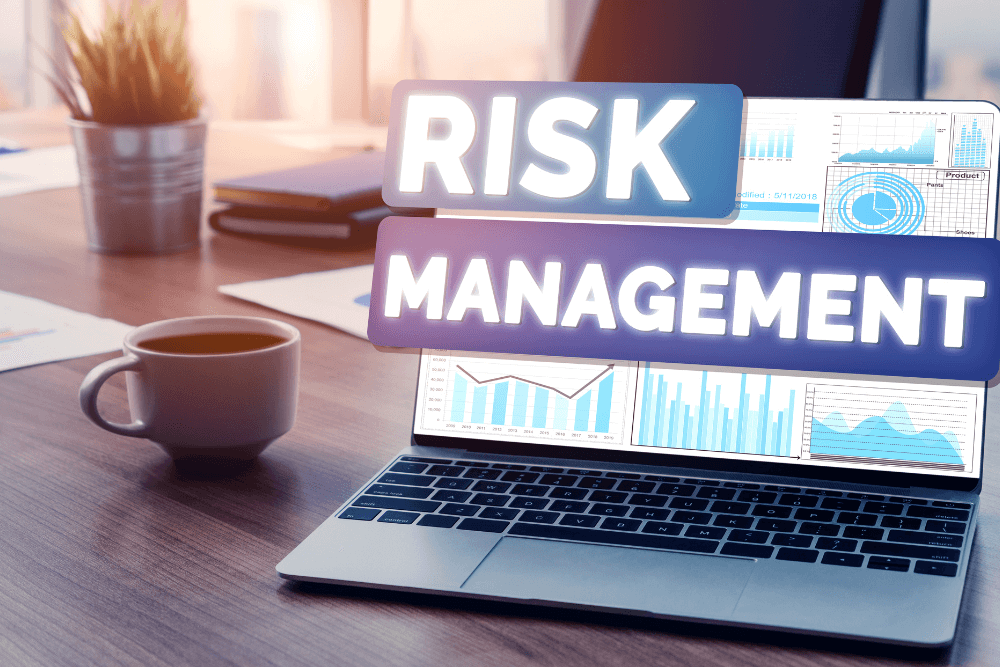
Published by NCIA’s Risk Management & Insurance Committee (RMIC)
2024 is shaping up to be a bang-up year for cannabis whether its constant news about the potential for federal action regarding rescheduling, or multiple states expanding their current cannabis markets or entering the cannabis space for the first time. As exciting as all this is for prospective cannabis business owners and operators, there’s an issue which we in the cannabis industry often encounter time and time again.
There’s plenty of businesses seeking to enter the industry who overlook the importance of insurance and risk management. This may not be the most exciting topics when thinking about cannabis, but its one of the most important and often sidelined. Here, we’ll dive into how insurance and risk management can impact your cannabis business and why it’s important not to delay this vital step in your business development.
Insurance and Cannabis
Due to the current federal illegality of cannabis, just the process of getting insurance for your cannabis business can be a headache. But just because it can be frustrating to get, doesn’t mean that this important business step should be forgotten about or ignored. If anything, starting early on your cannabis insurance path will help set you apart from others in early licensing phases and can often help with getting a license itself.
All states which have their own cannabis market require some form of insurance, and many require insurance documentation as a requirement for the licensing process. This can often be any form of insurance—from fire protection to property—so long as it’s up to date and follows the state regulations and guidelines.
What Are the Risks?
Perhaps no bigger risk in working with cannabis nowadays is the federal side of business. While we are eager about the prospects for rescheduling and with that, hopefully, some banking regulations such as some version of the SAFE Banking Act, there is always the federal risks. The odds are low that the federal government is going to step in and shut down all cannabis operations in states, but they aren’t entirely eliminated risks either.
Of course, when it comes to risk management, the federal government and their response to cannabis business isn’t the only thing business owners need to be concerned with. There’s the risks of theft of cash, diversion of cannabis and cannabis product, and even high turnover of staff. These are all inherent risks that should be managed and assessed when pursuing a cannabis license. This is also the case for businesses which may be up and running, though it is most critical to assess the risks and your own handling of them as early as possible.
Early Steps to Take
Let’s say you’re interested in opening your cannabis business. Maybe you’ve received a provisional license from the state, or perhaps you’re waiting for an application licensing round to open. What should you do when it comes to insurance and risk management?
Simple; start sooner than you anticipate. Over the years, clients have asked me countless times, “When should I get to work?”. It never hurts to be over-prepared, but it can torpedo your chances at licensure or opening a compliant cannabis business if you delay or rush some of the most important and necessary business functions. Insurance and risk management may not be what gets people into cannabis (I’m a nerd and think both these areas or interesting but even *I* wouldn’t say they’re what got me into this industry!) but they are essential. Start early and begin doing your own research in these areas.
Thankfully, there are insurance providers who will work with “plant-touching” businesses such as a dispensary or cultivation facility. They may not be the easiest to come by, but they are out there and are familiar with cannabis operations and the risks associated with insuring a business like yours.
And when it comes to risk management, identify your own risks through a thorough SWOT analysis (strengths, weaknesses, opportunities, and threats) or a detailed risk assessment. Find professionals who can guide you through this too if needed, as they’ll be the ones who can highlight what are some of the unique and individualized risks your business may have. For example, an outdoor cultivator has different risks than an indoor cultivator or a hoop-house cultivator.
When it comes to insurance and risk management, it’s never too early to begin discussing and meeting with professionals who can help and this is an area which shouldn’t be ignored or put onto the back burner for too long.
Committee Blog: Crash & Grab – Hitting the Brakes on a Cannabis Burglary Trend

Published by NCIA’s Risk Management & Insurance Committee (RMIC)
Contributors:
Ben Taylor, Executive Director of the Cannabis Information Sharing & Analysis Organization
Matthew Johnson, Risk Consultant at AssuredPartners
Haley Glover, Senior Security Consultant at Sapphire Risk
So, you run a cannabis business. You’ve spent years and years going through the licensing process, finding a suitable facility, hiring qualified employees, and growing top shelf buds to impress sophisticated buyers.
It hasn’t been easy – and it hasn’t been cheap. But that feeling you get when you help a sick customer find their new favorite medicine – well, that makes it all worthwhile. After all that hard work, nobody wants to see it all slip away in the middle of the night (and sometimes broad daylight) due to theft.
We have long known cannabis businesses’ perceived abundance of cash on hand has attracted criminal activity. This is evident with the industry’s issues of armed robberies and the silent scourge of employee theft, targeting everyone — well-known brands like Cookies to mom & pop shops. This blog will examine a recent trend which has been on the rise, criminals utilizing vehicles to breach facilities in the act of a burglary.
Dude, Where Did This Car Come From?
Have you recently seen a headline like “Thieves Crash Stolen SUV into Seattle Marijuana Dispensary During Burglary,” or “Five Arrested After Stolen Vehicle Involved In Cannabis Dispensary Robbery Crashes,” and think you were having déjà vu? Unfortunately, those two incidents happened months apart, in two different states last year. The fact is that criminals are increasingly utilizing vehicles as the primary means of breaching cannabis facilities to obtain cash & product.
While not a new technique, vehicle rammings have risen in prevalence over the past few years, sparked in part by a TikTok trend known as the Kia Boyz. As the Cannabis Information Sharing & Analysis Organization (Cannabis ISAO) detailed for The Blunt, the trend starting picking up within the industry in 2022 as social media spread details on how to easily start non push-button ignitions on certain makes and models utilizing a USB charger.
It is important to understand crime trends like this to evaluate a changing risk landscape, which can impact how resources are deployed. But for this blog, how a criminal obtained a stolen vehicle and breached your outer security isn’t the most relevant question. We will focus both on mitigation strategies, as well as how to respond to such incidents.
Let’s Hear From A Security Professional
With years of experience in cannabis (not to mention jewelry stores and pawn shops), the Sapphire Risk team are bona fide experts in security. Though they prefer to be involved as early as the application/buildout process, Sapphire’s team frequently gets called in after break-ins to help operators fortify their facilities.
We spoke with Sapphire Risk’s Senior Security Consultant Haley Glover, who shared the following advice about preventing unauthorized vehicular-assisted entry. “Implementing physical barriers like bollards or security planters placed strategically around the exterior of the building are great ways to prevent a vehicle from successfully driving through your location.” Bollards can be tremendously effective at stopping an errant vehicle in its tracks. Keep an eye out and you’re likely to notice them around federal buildings, banks, and high-end retail stores!
Another area of concern for cannabis businesses are the entryways. Haley advises, “A business can utilize the strongest and most secure door, but without a frame to match it, the door is useless, so it’s important to consider all aspects of a facility when securing it and identifying where threats and vulnerabilities could be present.” Don’t put a strong door in the middle of some cheap drywall!
Beyond Walls, Bars & Guards
While Warden Norton from Shawshank Redemption felt the only way to spend tax-payers’ hard-earned money was to get “more walls, more bars, and more guards”, adding additional physical barriers is not the only deterrence strategy that cannabis operators should be considering to safeguard their facilities.
Washington State’s Senate unanimously passed a bill that would increase penalties for anyone who utilizes a vehicle to gain entry into a cannabis retailer. Senate Bill 6133, sponsored by state Sen. Jim McCune, R-Graham, would have a new “special allegation” to seek an additional year of custody for the convicted criminal. Prosecutors could also charge the suspect with either first-degree or second-degree robbery – a class A or class B felony, respectively. (A PDF of the bill can be viewed here.)
NCIA’s Risk Management & Insurance Committee recently spoke with Senator McCune’s staff to learn more about this initiative. It is important to note that while this bill’s genesis from legislative recognition of a growing safety problem, there is now a model for industry professionals in other states to help drive legislation that will serve as a proactive deterrent.
While the passing of the Integrity, Notification, and Fairness in Online Retail Marketplaces for Consumers (INFORM Act) by Congress last year made headlines as a major win in the fight against Organized Retail Crime (ORC), it’s mainly addresses the problem of reselling stolen merchandise via online marketplaces, which is not the destination of stolen cannabis products. This is further proof cannabis businesses need to lean into their State legislatures to get support that is currently unavailable at the Federal level. Efforts like the Robbery Tracker that has been put together for several years by Uncle Ike’s Ian Eisenberg can help demonstrate to legislators the need for additional crime deterrents.
Dive into Insurance Mumbo Jumbo
Let’s talk about Protective Safeguards endorsements on cannabis property policies. These endorsements will exclude losses if all the described protective safeguards (security guards, alarms, cameras, vault, etc.) aren’t in place and/or properly functioning. Imagine having a house fire and getting your claim denied because you didn’t replace the batteries in your smoke detector. Well, it’s the same thing for cannabis.
Protective Safeguards endorsements can be as simple as a burglar alarm or as demanding as needing a follow car, two way radios, and telematics in place for your cannabis delivery vehicles. Another common provision is for product on display – most insurance policies required product to be stored in a safe/vault while a store is non-operational, with a sublimit only allowing around 25% of stock to be on display at any given time. Whatever the situation, best to make sure you read the policy thoroughly and understand what is required of you for coverage to respond.
One should also be familiar with the coverage sublimits in their policy and adjust them regularly to adequately reflect stock on hand. In another scenario, a cannabis business has all of their security systems and protective safeguards in line. Robbers come by and steal millions of dollars worth of cannabis products — but the business only has a $100,000 sublimit for cannabis inventory! Imagine the frustration of following all the rules and only walking away with a partial reimbursement after a huge loss.
Incident Response
As with any incident, things go more smoothly when you have a plan in place and everyone knows their roles and responsibilities. This can help ensure to both expedite the process, while also making sure vital steps are not overlooked.
Some items that should be contemplated in the plan might include:
- Contact local law enforcement
- Gather and maintain written event logs
- CCTV video storage and maintenance
- Appropriate follow-up steps depending on the situation
- security weak-spot reviews,
- HR interviews,
- medical follow-up, or
- filing an insurance claim
By having formal guidelines in place for event response, you’ll save valuable time and money getting the business operational again — while minimizing the confusion that your employees face during a time of crisis.
Conclusion
The RMIC advocates for a proactive approach to risk management that emphasizes the importance of informed decision-making. When in doubt, contact a trusted insurance professional and get a second set of eyes on your coverage — and your protective safeguards!
Member Blog: Amazon’s “Hemp” Products Are Lying to You, New CBD Oracle Lab Study Finds

Amazon’s “Hemp” Products Are Lying to You (and Hurting the Industry), New CBD Oracle Lab Study Finds
TL;DR: A CBD Oracle investigation finds that 43% of hemp products sold on Amazon often don’t contain hemp at all, and are deceptively marketed to evade Amazon’s lax enforcement.
The independent investigation of the hemp market on Amazon which was commissioned by CBD Oracle has found that almost half of all products lie to customers and has revealed the challenges faced by both consumers and honest sellers on the platform.
Along with 43% of so-called “hemp” products not containing any hemp at all, companies selling on Amazon.com often report their products being pulled from the storefront while those obviously lying about their contents remain up on sale.
The market is a minefield for consumers and the main benefactors are deceptive fly-by-night companies and Amazon themselves.
A Brief Introduction to Amazon’s Hemp
If you’ve ever bought or sold hemp before, browsing the selection available on Amazon is truly bewildering.
Products promise doses of hemp that are impossible to fit into a gummy, make obvious medical claims and reassure customers that they’re third-party lab tested while usually not making the results available on Amazon or anywhere else. There are so many red flags they start to look like wallpaper.
Amazon policy prohibits CBD unless it’s a topical product which has been specifically approved. This was established to prevent unreliable or illegal products from making it onto the site, but the consequence has been just the opposite. Instead, sellers simply don’t mention the word “CBD” anywhere on the product page, and this provides a smoke-screen to companies hoping to sell the expectation of CBD while actually offering nothing of the sort.
“Hemp” on Amazon is not a description, but a purposefully vague euphemism.
Testing the Hemp Sold on Amazon
CBD Oracle purchased 56 of the most popular hemp products on Amazon and sent them to InfiniteCAL for testing. The main results show the impact of the current policies on the platform.
- 30% of products contained CBD. Although these products violate Amazon policy, they at least offer customers what the listings imply in a basic sense.
- 62.5% of products contained no cannabinoids at all. Given that the majority of products explicitly promised some amount of “hemp” in milligrams, these products are misleading at best.
- 43% of products contained no hemp at all, as verified by gas chromatography-mass spectrometry (GC-MS) testing. Every single product in the study promised “hemp,” but even if they meant hemp seed oil, these 43% are still blatantly deceiving customers.
- 11% of products tested positive for THC, with three products having huge quantities of delta-8 THC. The maximum dose per gummy was 76 mg THC.
- 96% of products did not provide an accurate dosage to customers. This means that the measured dosage doesn’t fall within 10% of what they advertised.
The Misleading Marketing of Amazon’s Hemp
The lab results show that the hemp sold on Amazon doesn’t meet the expected standard of CBD and hemp products in the modern day. However, customers on Amazon are less likely to be engaged with the industry and probably have less of an idea of what is expected of any hemp product. Combined with some careful marketing, this makes the average Amazon hemp buyer way more likely to pick up an unreliable product.
CBD Oracle’s analysis of the marketing of Amazon hemp reveals many serious problems with the market and the claims sellers make:
- 52% of products are sold based on unapproved medical claims, often surrounding pain, stress or anxiety relief.
- 95% of products do not provide a third-party lab report to consumers anywhere online, and none of them are shown on Amazon.
- Customer reviews were unreliable in about half of cases. Mozilla’s FakeSpot rated 48% of products D or lower for overall reliability.
- There was no reliable, direct method to communicate with the sellers behind 89% of products. 28 products were identified as breaking the INFORM Consumers Act.
- Many products make claims which are literally impossible (e.g. 7.7 pounds of “hemp” in a 0.8 pound package), but are not removed when reported to Amazon.
How Amazon’s Hemp Impacts the Wider Industry
Amazon’s hemp market is not only bad for the customers who choose to make purchases through the retailer; it also threatens the perception of the industry at large.
Andrew Livingston, Director of Economics & Research at Vicente, commented to CBD Oracle that:
“One, these products drive consumer[s] away from the entire hemp supplement category for fear that the entire market cannot be trusted or is not properly regulated. This means legitimate businesses with great products that benefit consumers lose out. Second, problematically labeled and branded hemp products indicate to regulators and public officials that the entire category needs more robust and stringent restrictions.”
In short, even though these products come from unknown companies and aren’t widely regarded in the hemp industry, their careless actions threaten to drag the whole industry through the mud with them.
Conclusion: How Amazon Can Solve the Problem
Amazon’s hemp problem is created by a lack of enforcement and a policy which incentivizes companies that lie about their products. In line with this, there are two avenues for a solution.
Firstly, Amazon could simply devote more resources to enforcing their current policy.
Alternatively, and more realistically, they could acknowledge that CBD is sold on their platform, and instead rectify their policy. By allowing CBD products if they are backed up with a certificate of analysis by an accredited third-party lab, honest manufacturers would be able to compete on a level playing field, and virtually all of the products in this analysis would have to prove their claims or be removed from sale.
One thing is certain: the status quo on Amazon is harmful to both consumers and the industry, and it has to stop.
The full dataset from the analysis is available in this spreadsheet. You can download a summary of the report in PDF here.
About the author:
Lee Johnson is the senior editor at CBD Oracle, and has been covering science, vaping and cannabis for over a decade. He focuses on research-driven deep dives into topics ranging from medical uses for CBD to industry and user statistics, as well as general guides and explainers for consumers.
CBD Oracle is a consumer research company working to improve the safety and transparency of cannabis and hemp products, producing in-depth research pieces on cannabis and cannabinoids, along with analysis of social and legal issues.















































